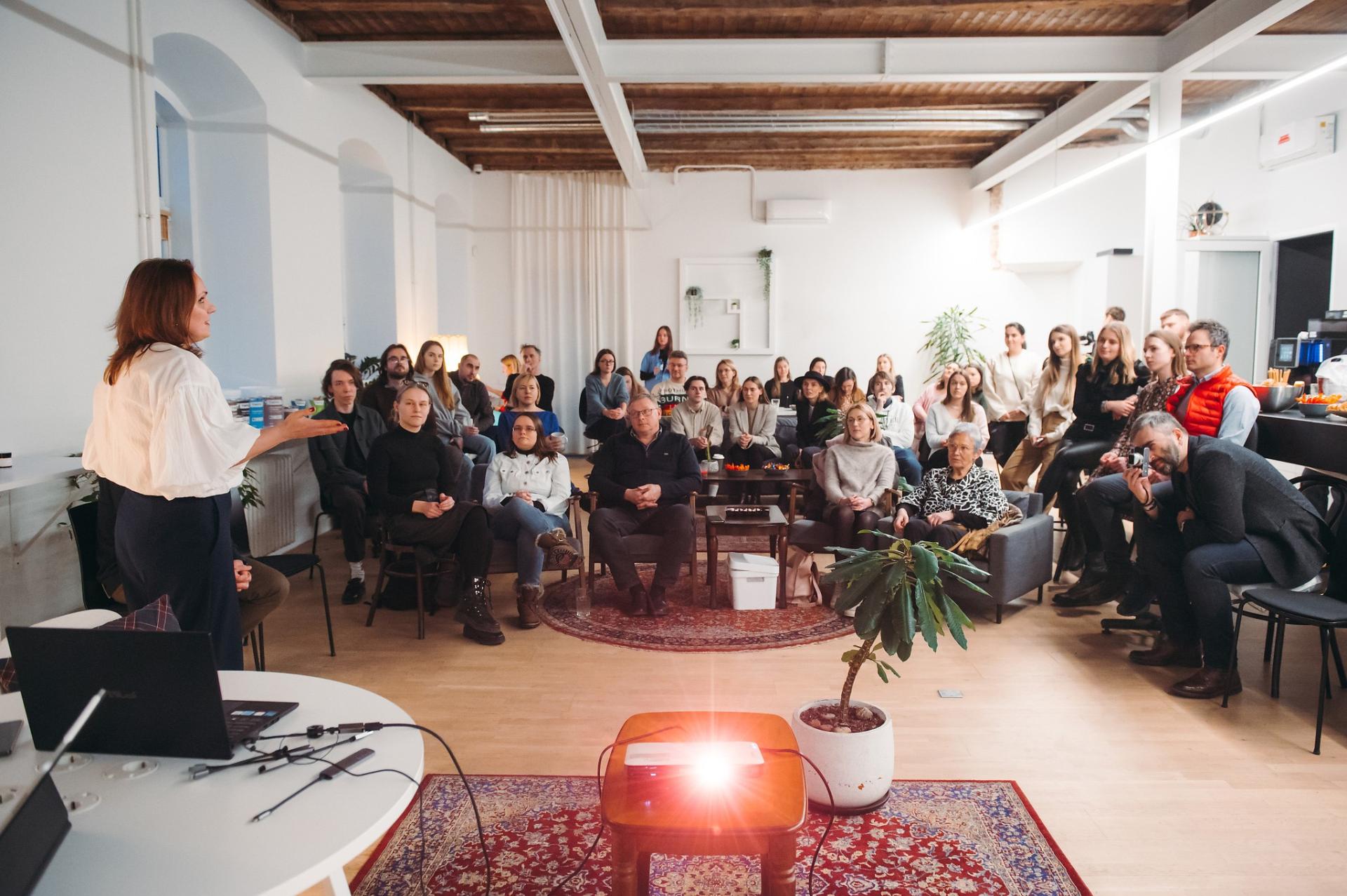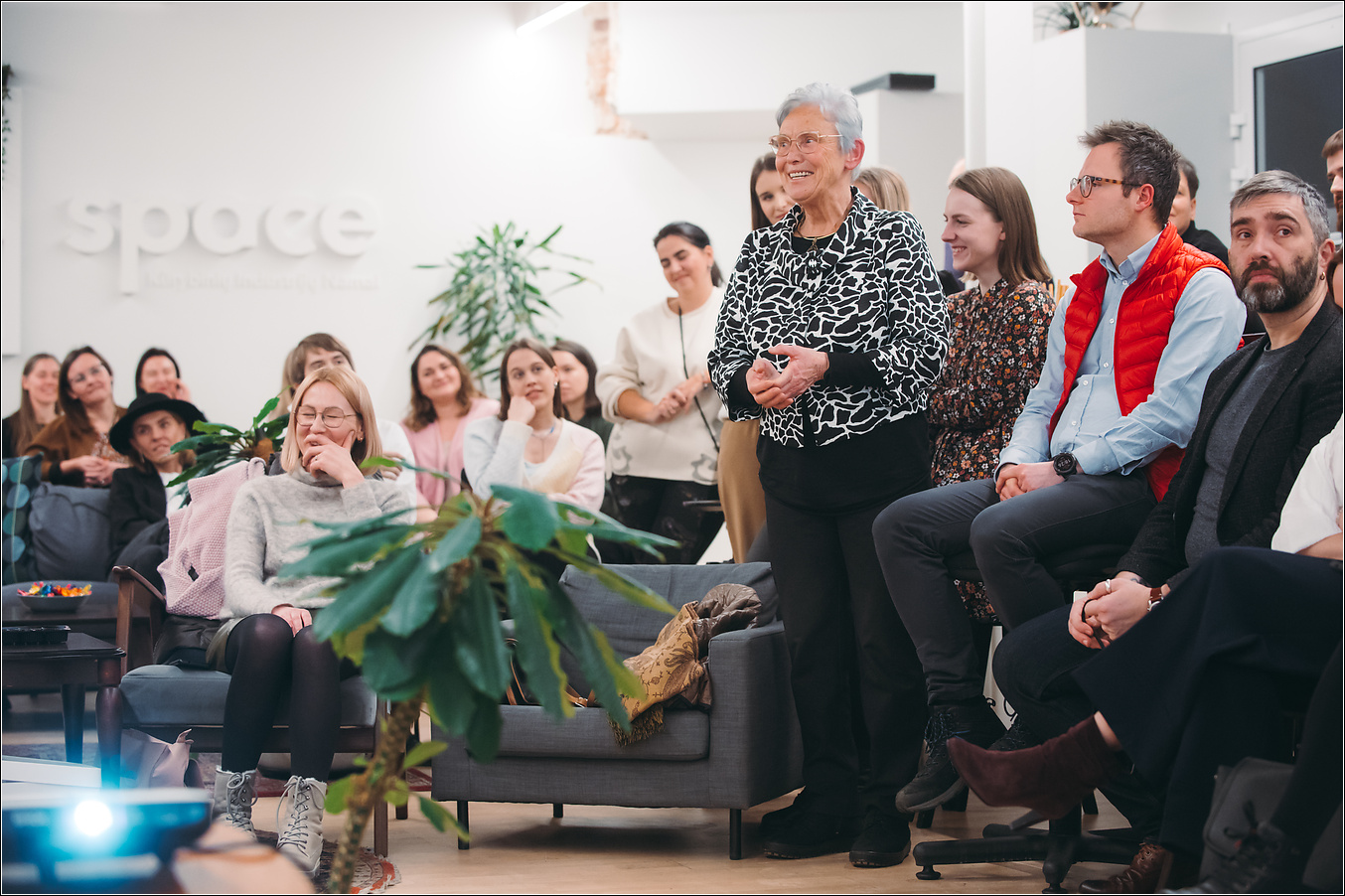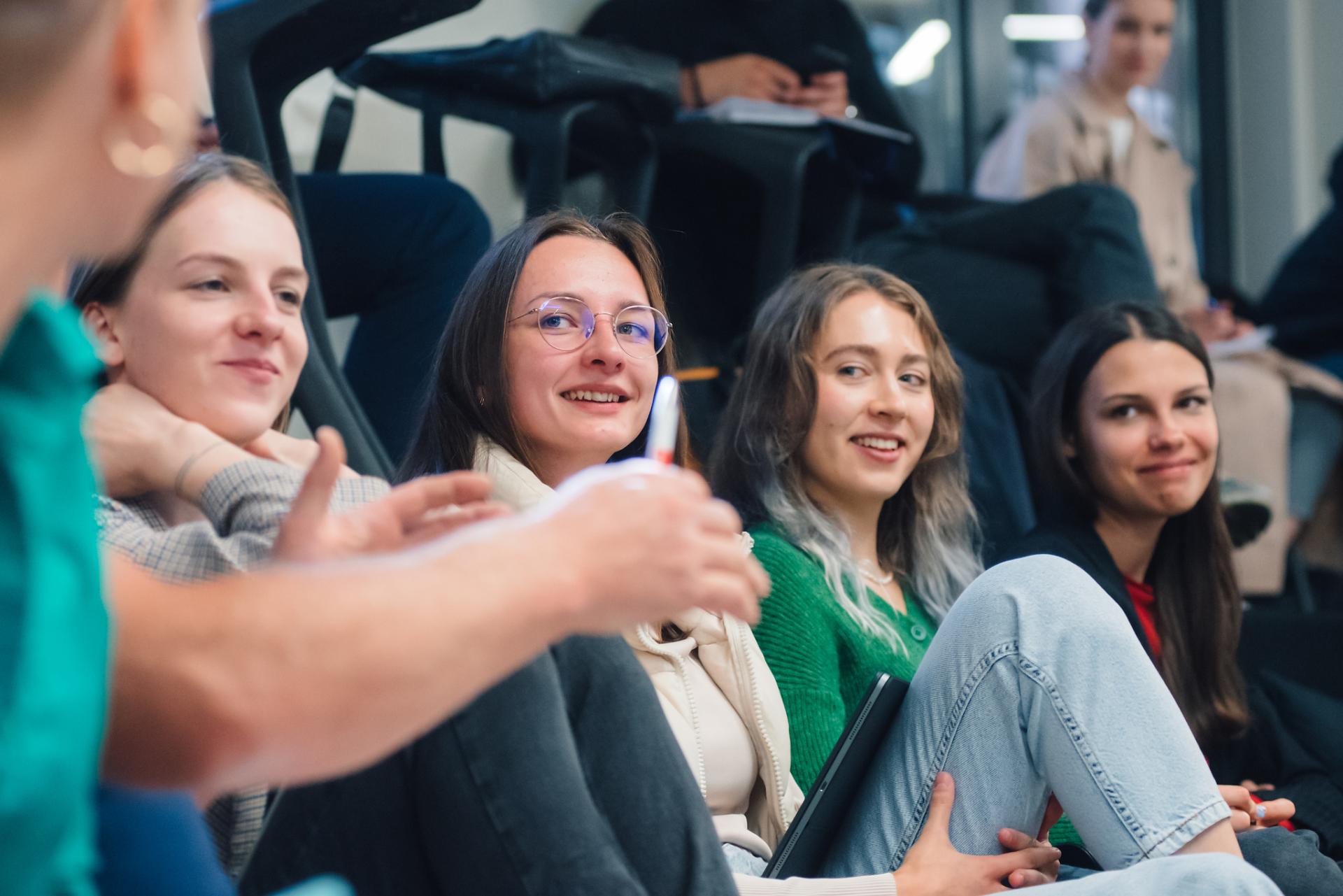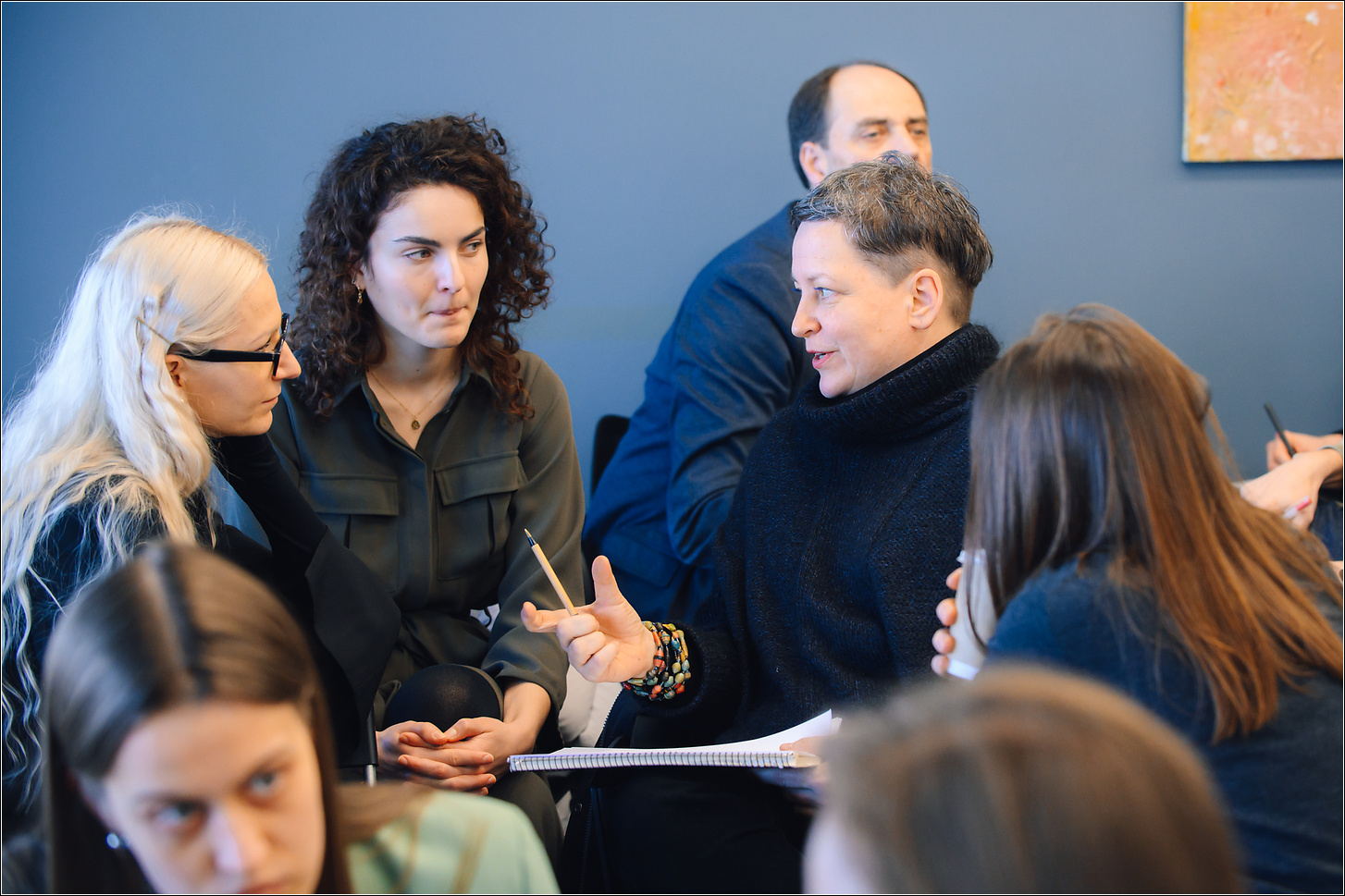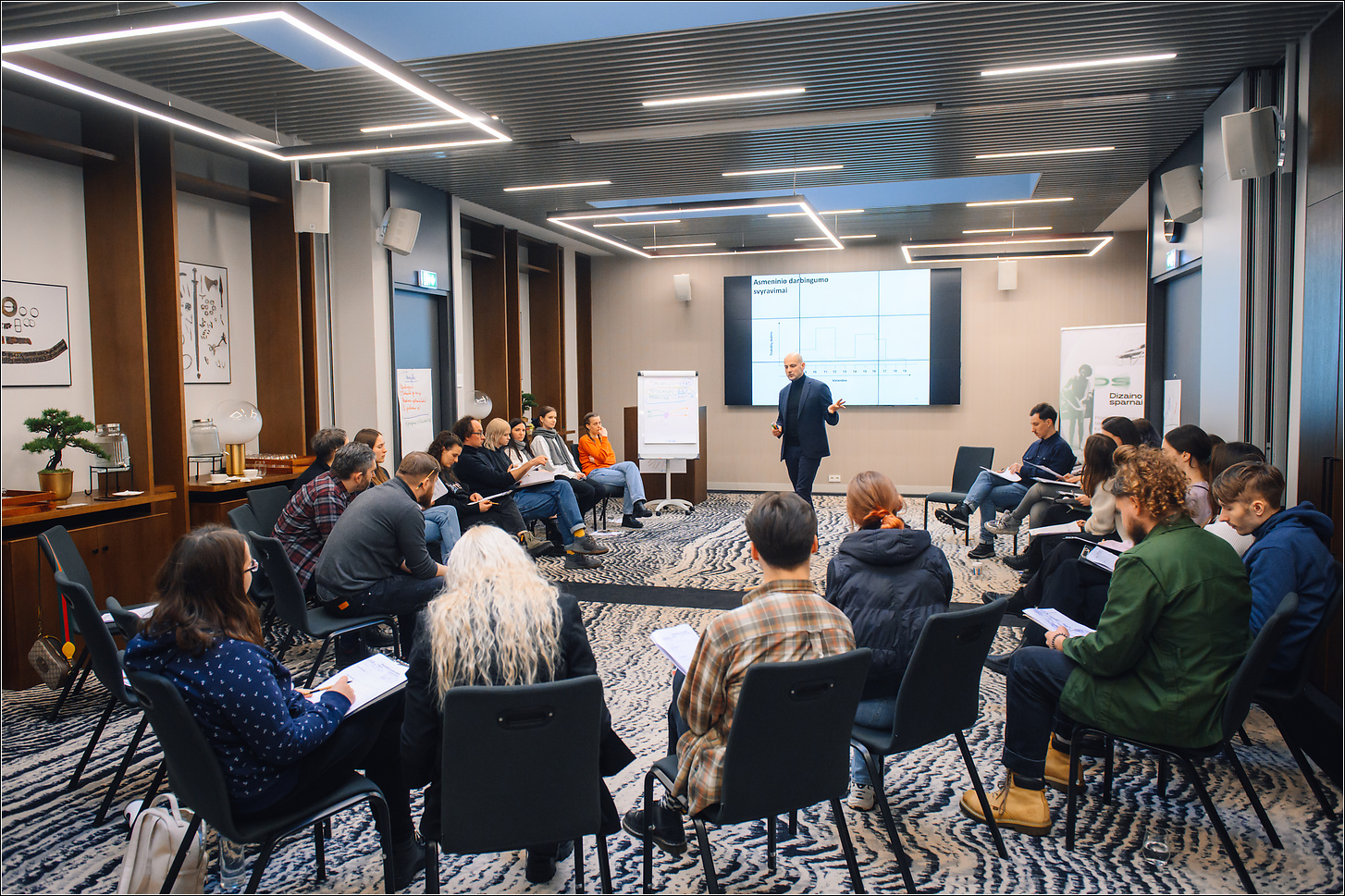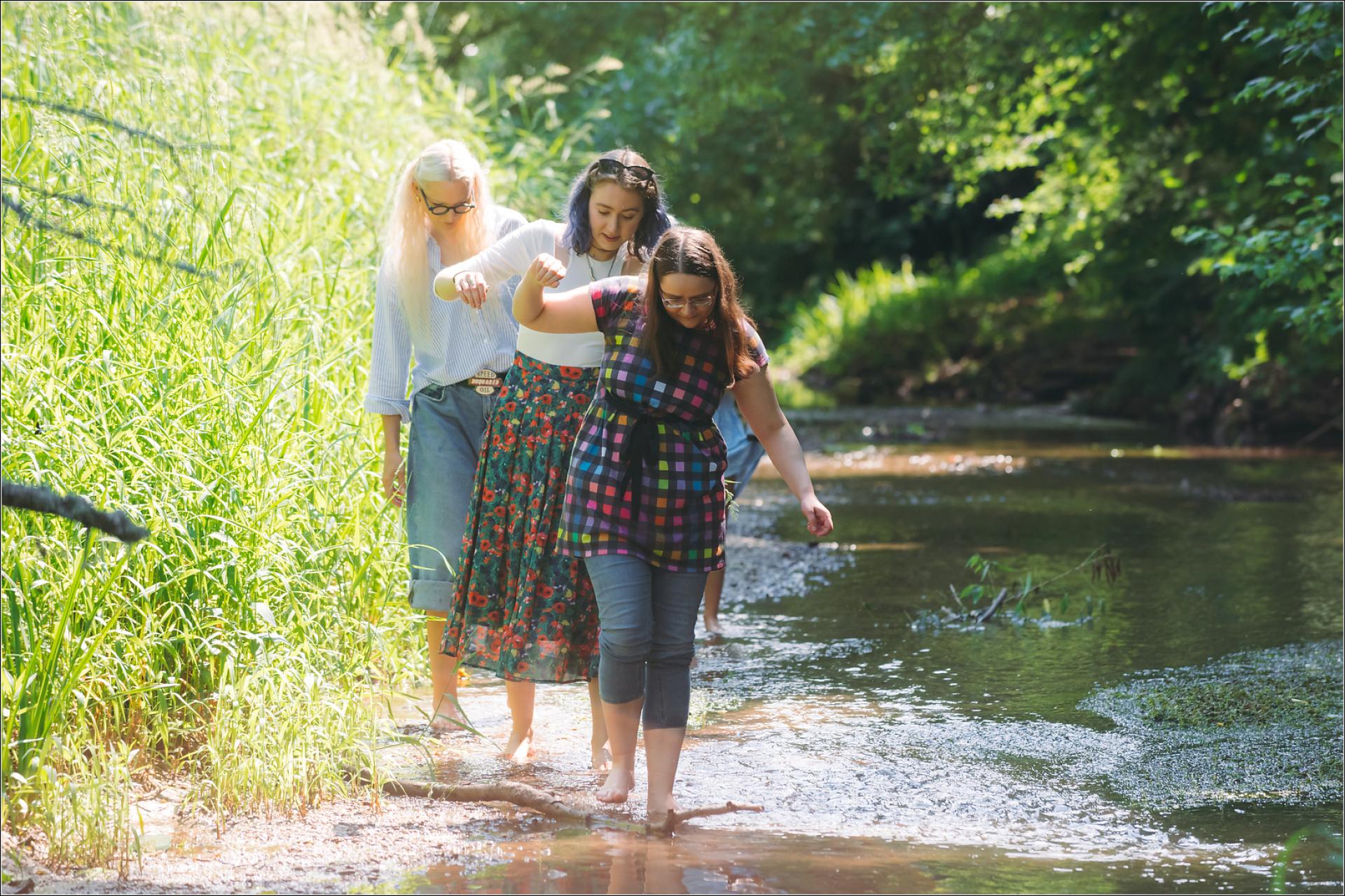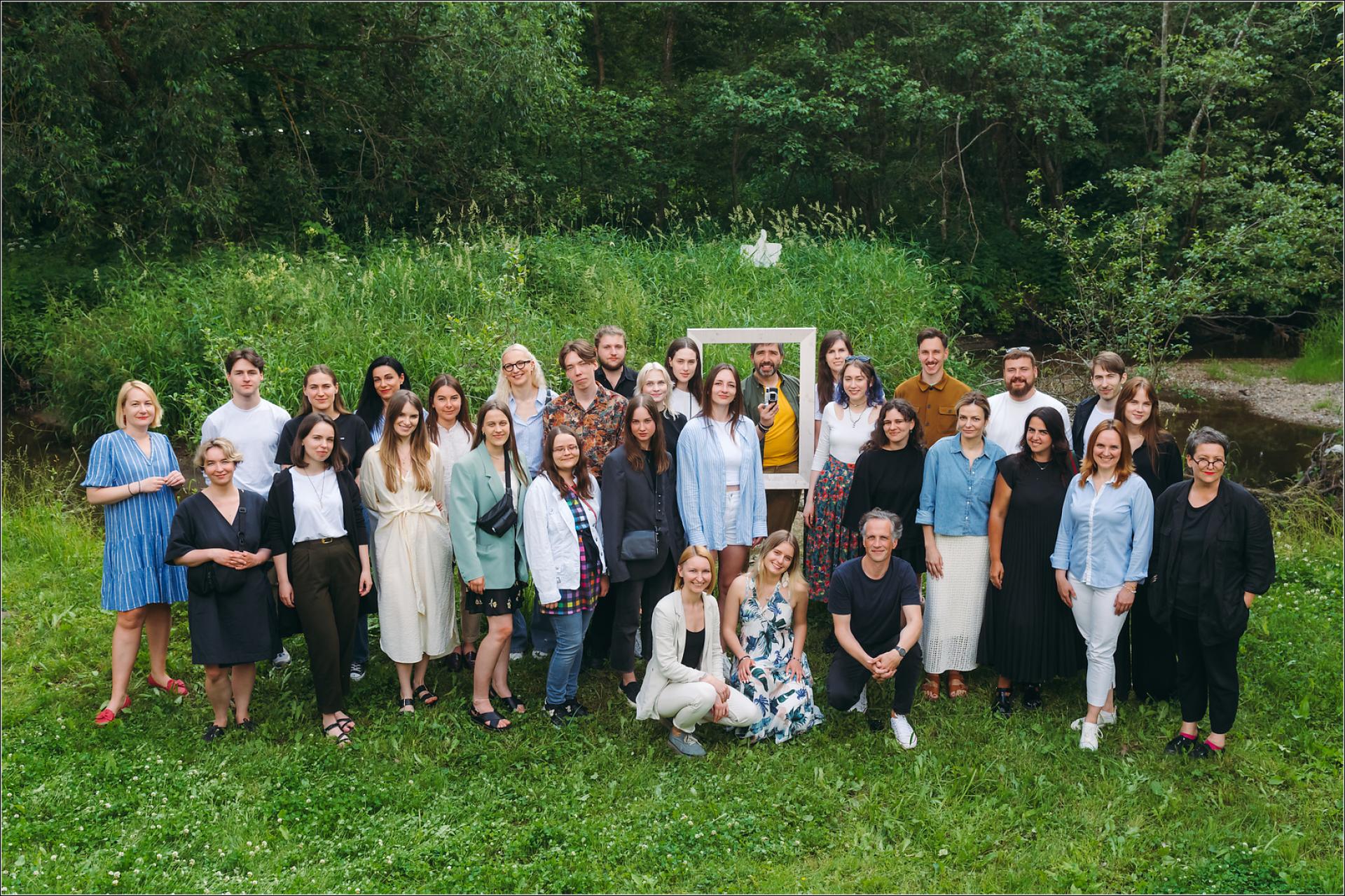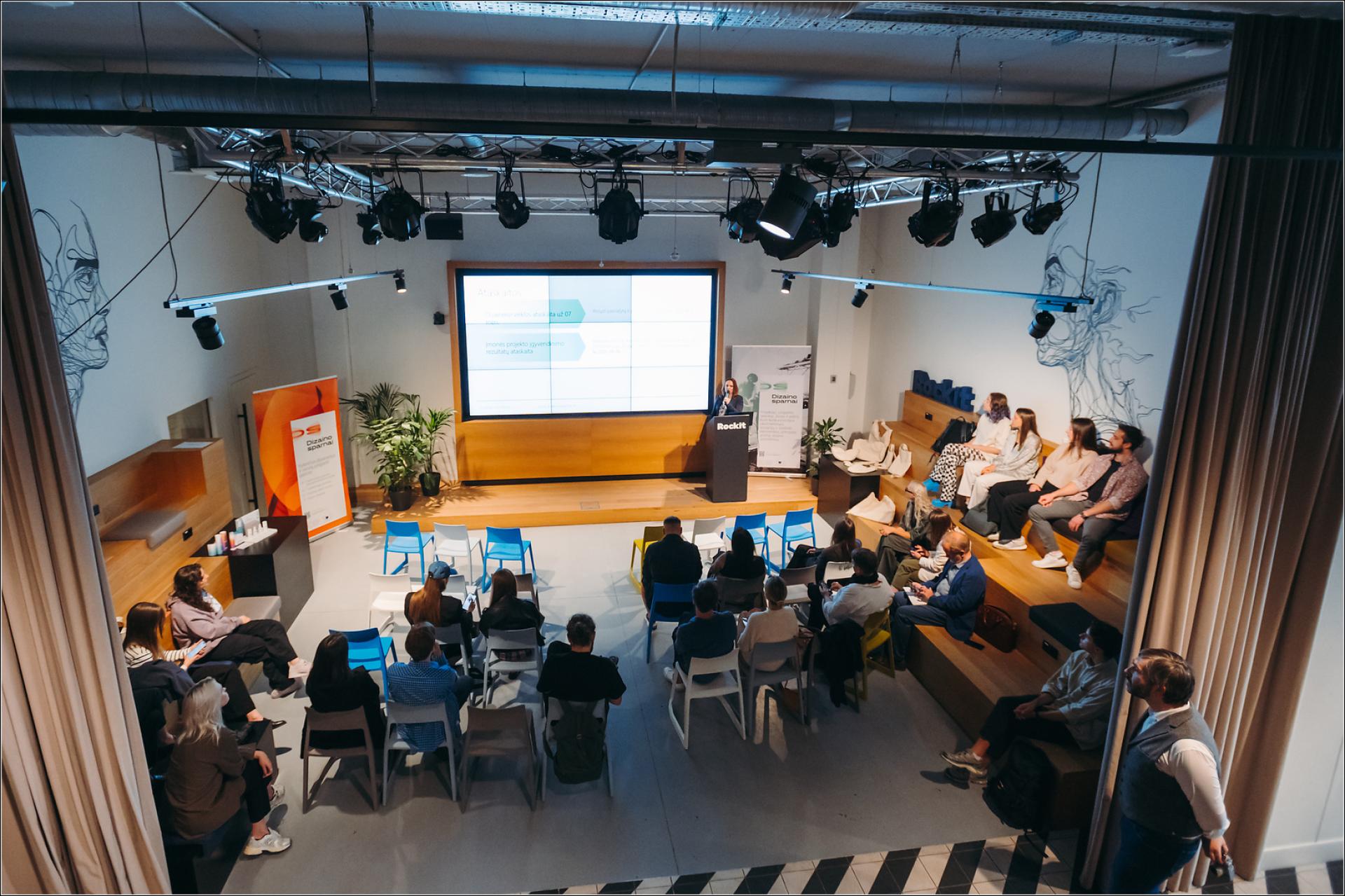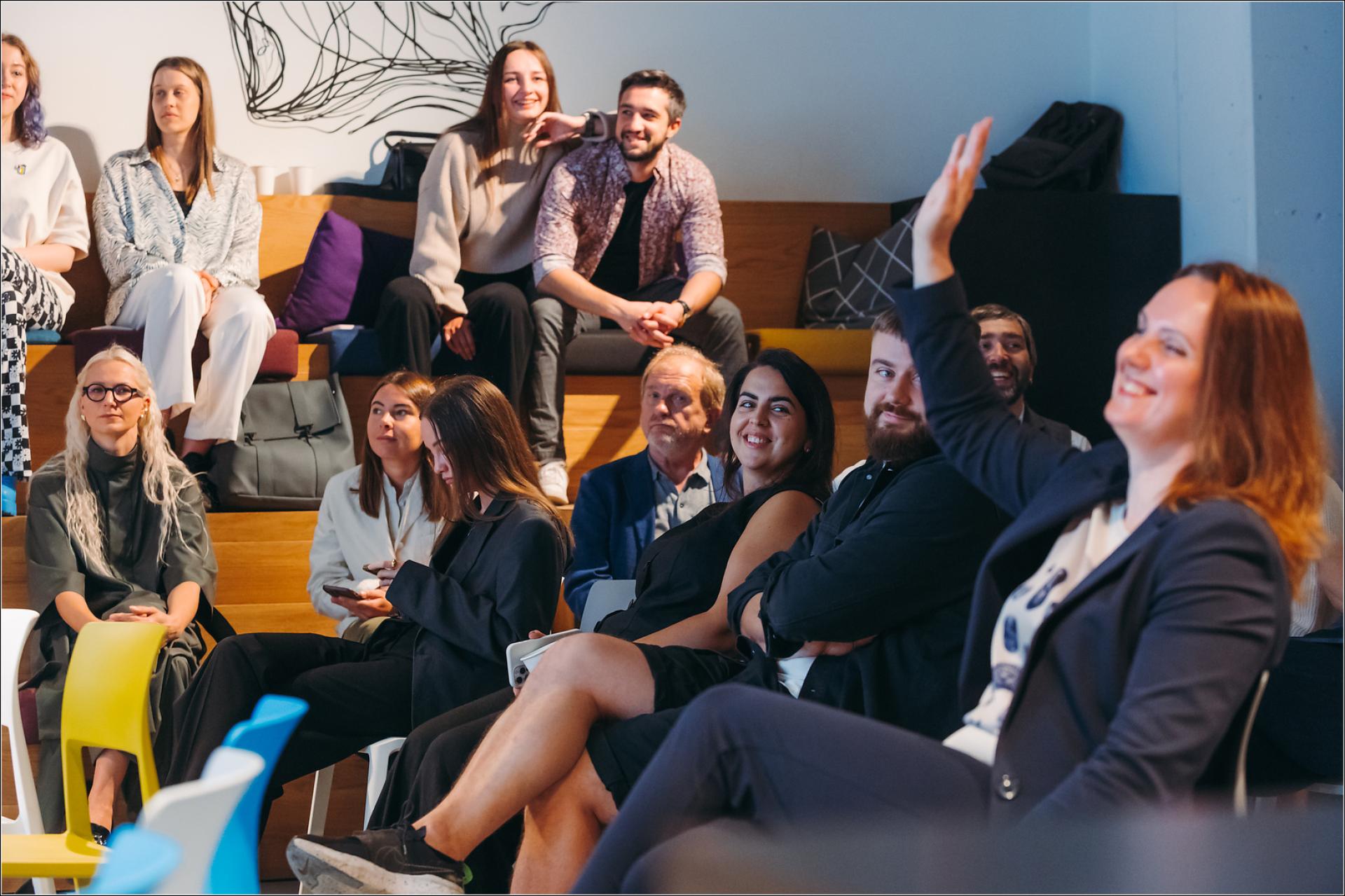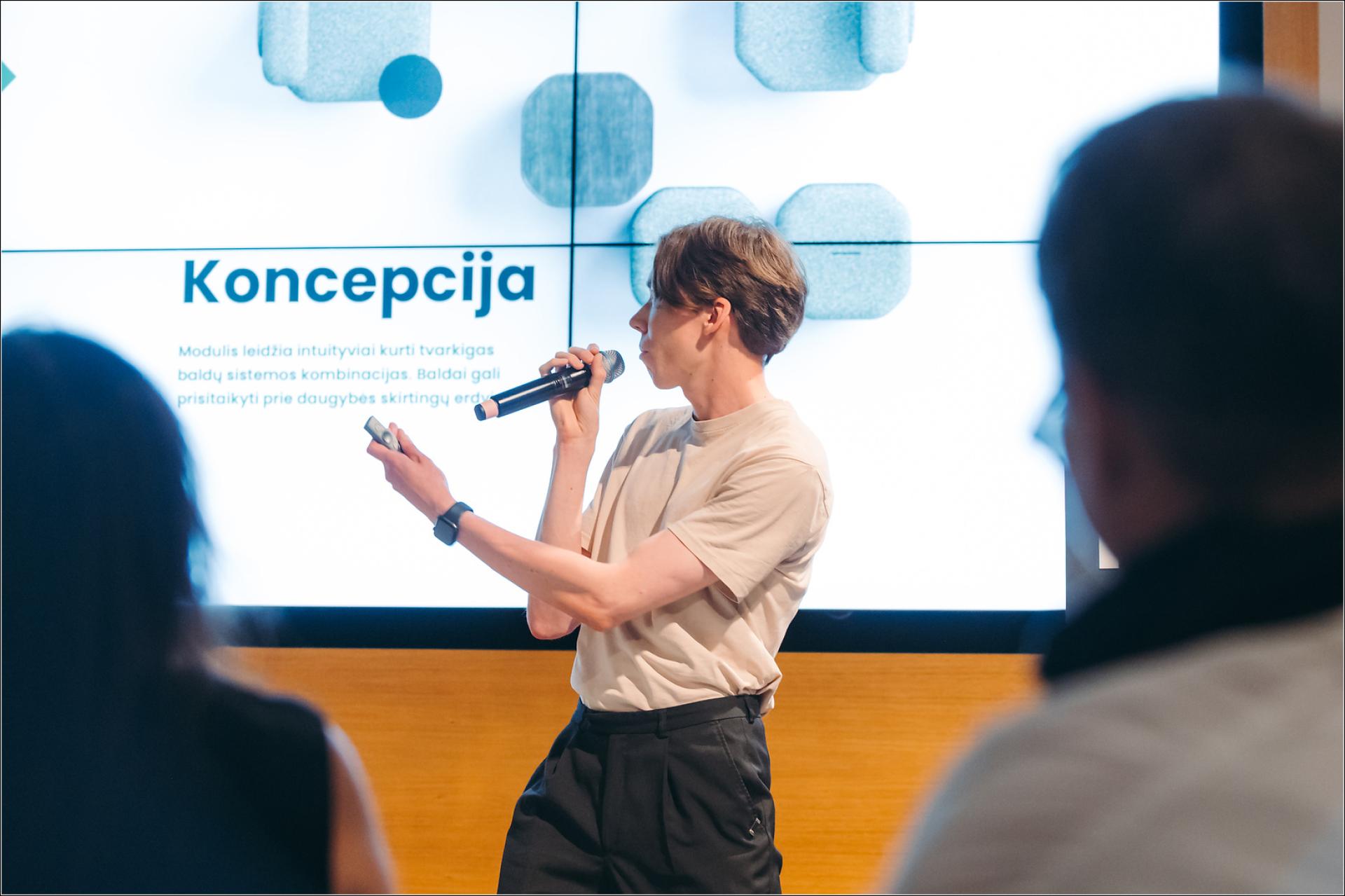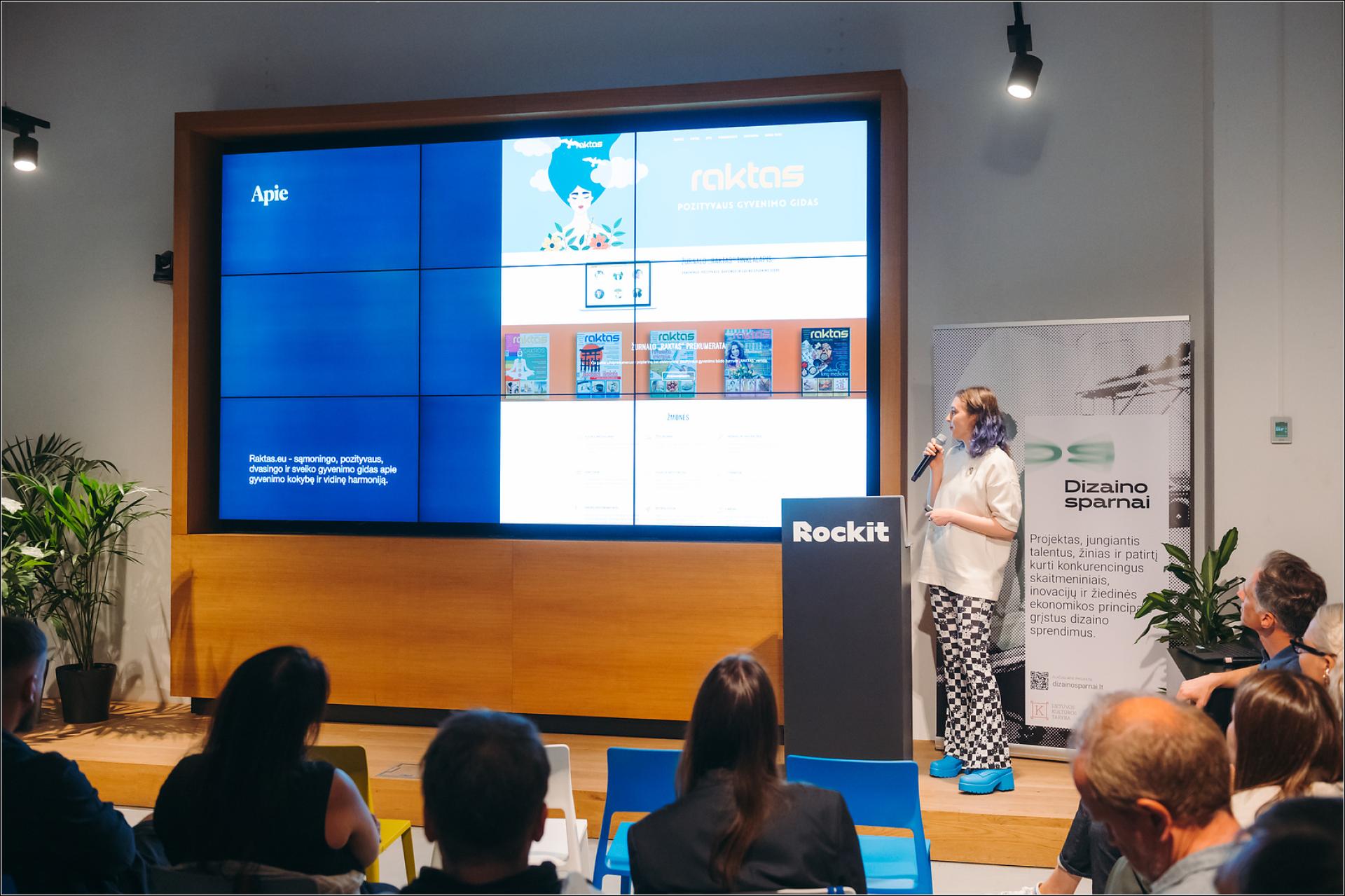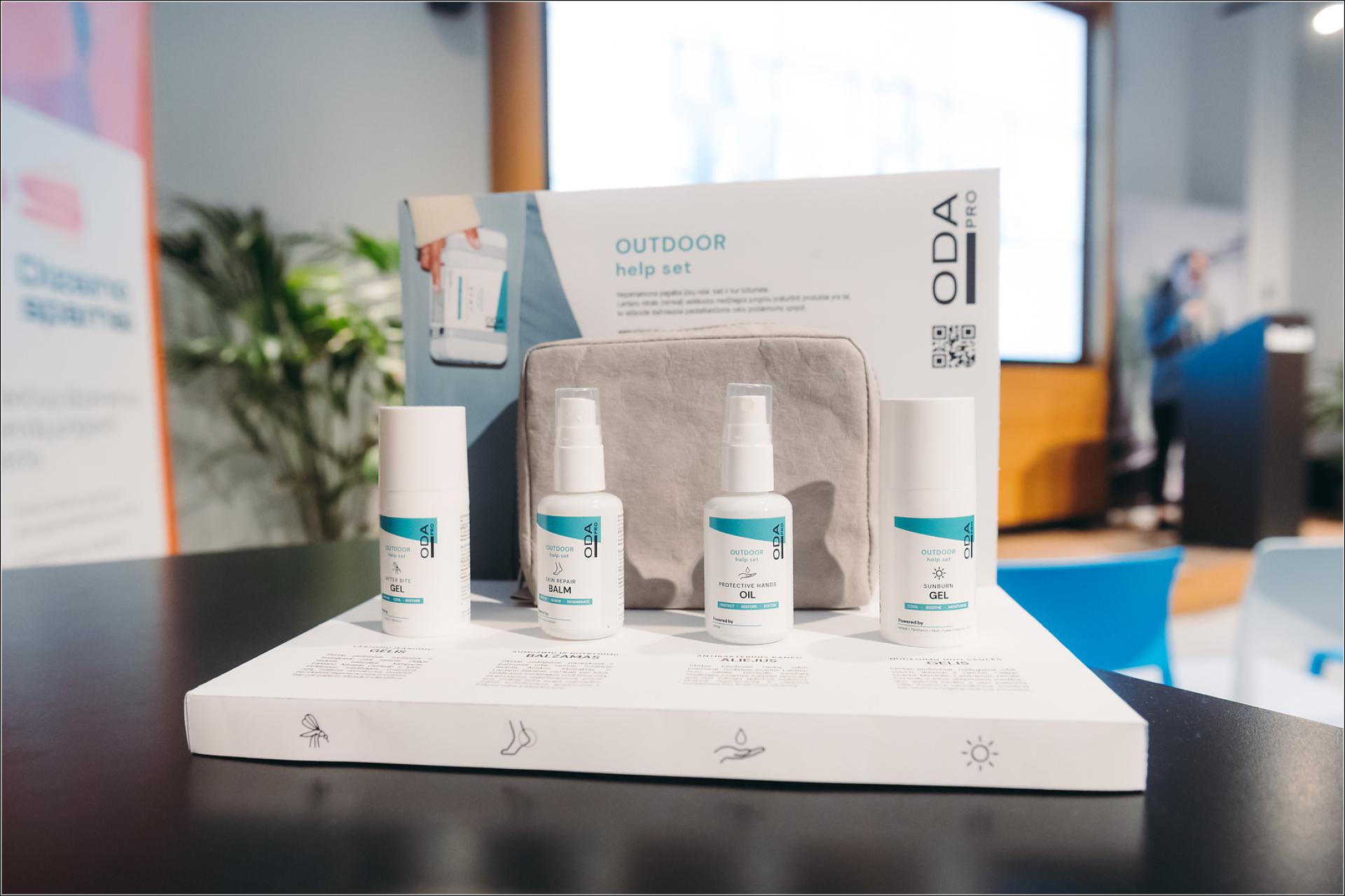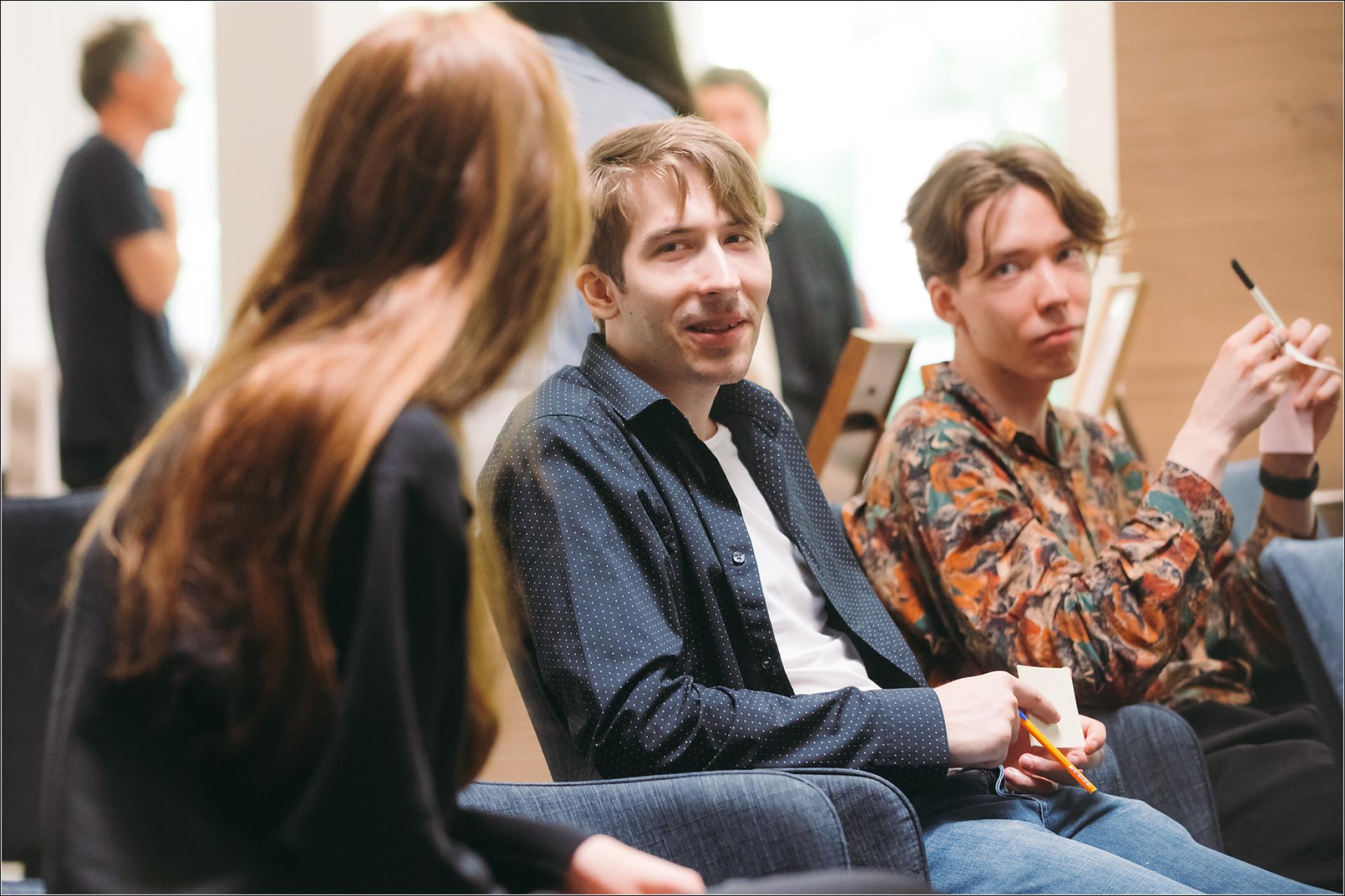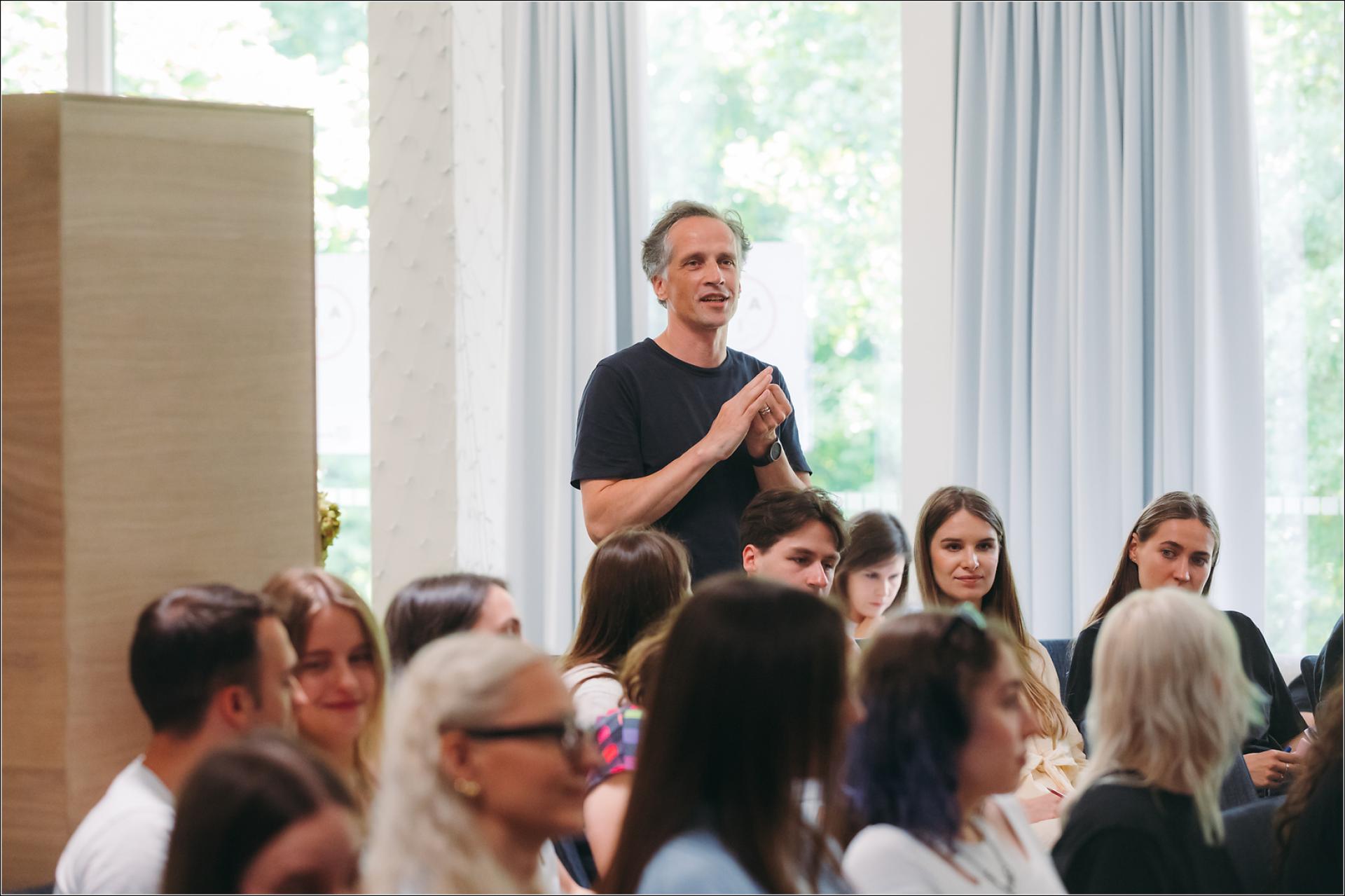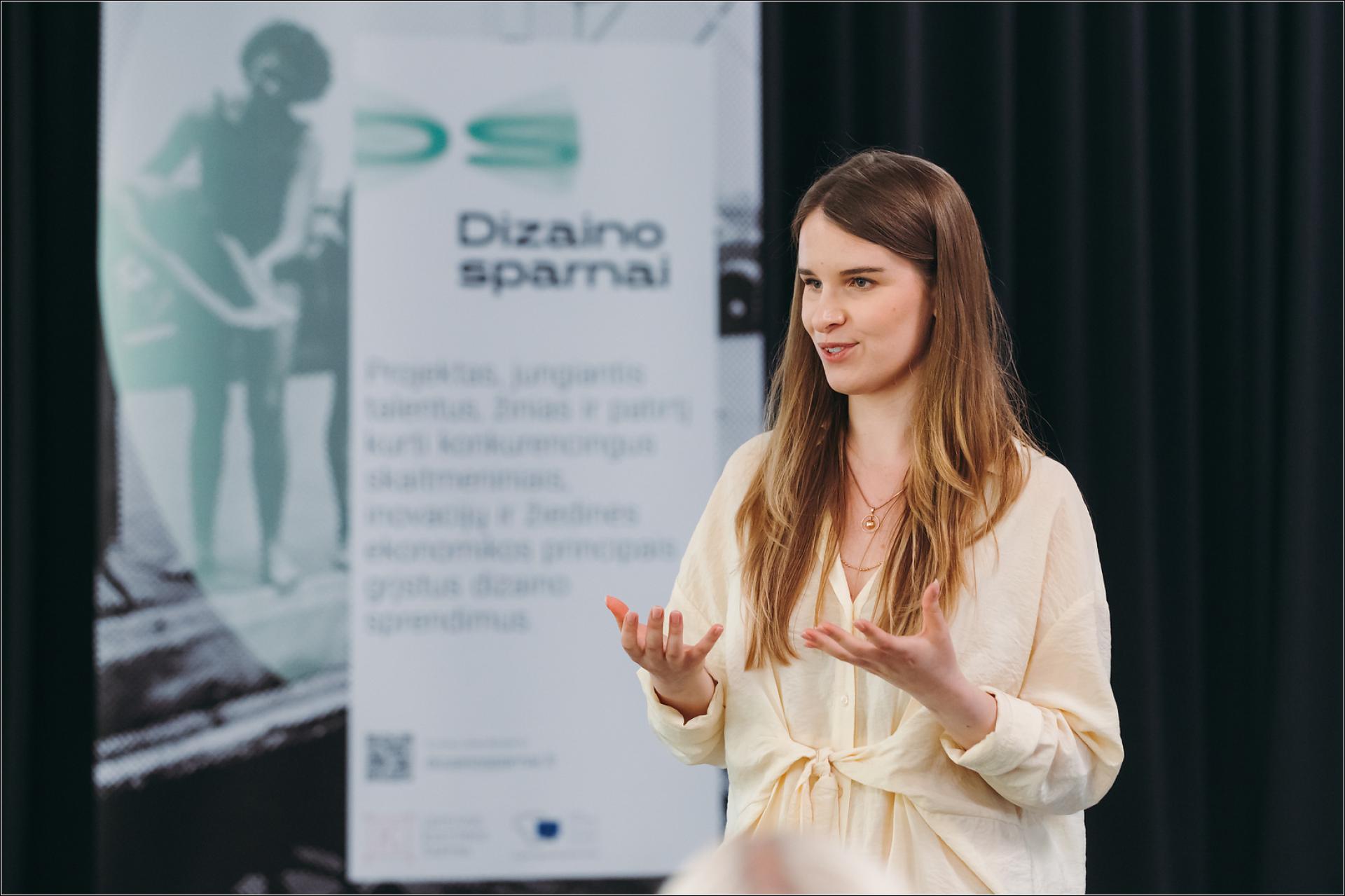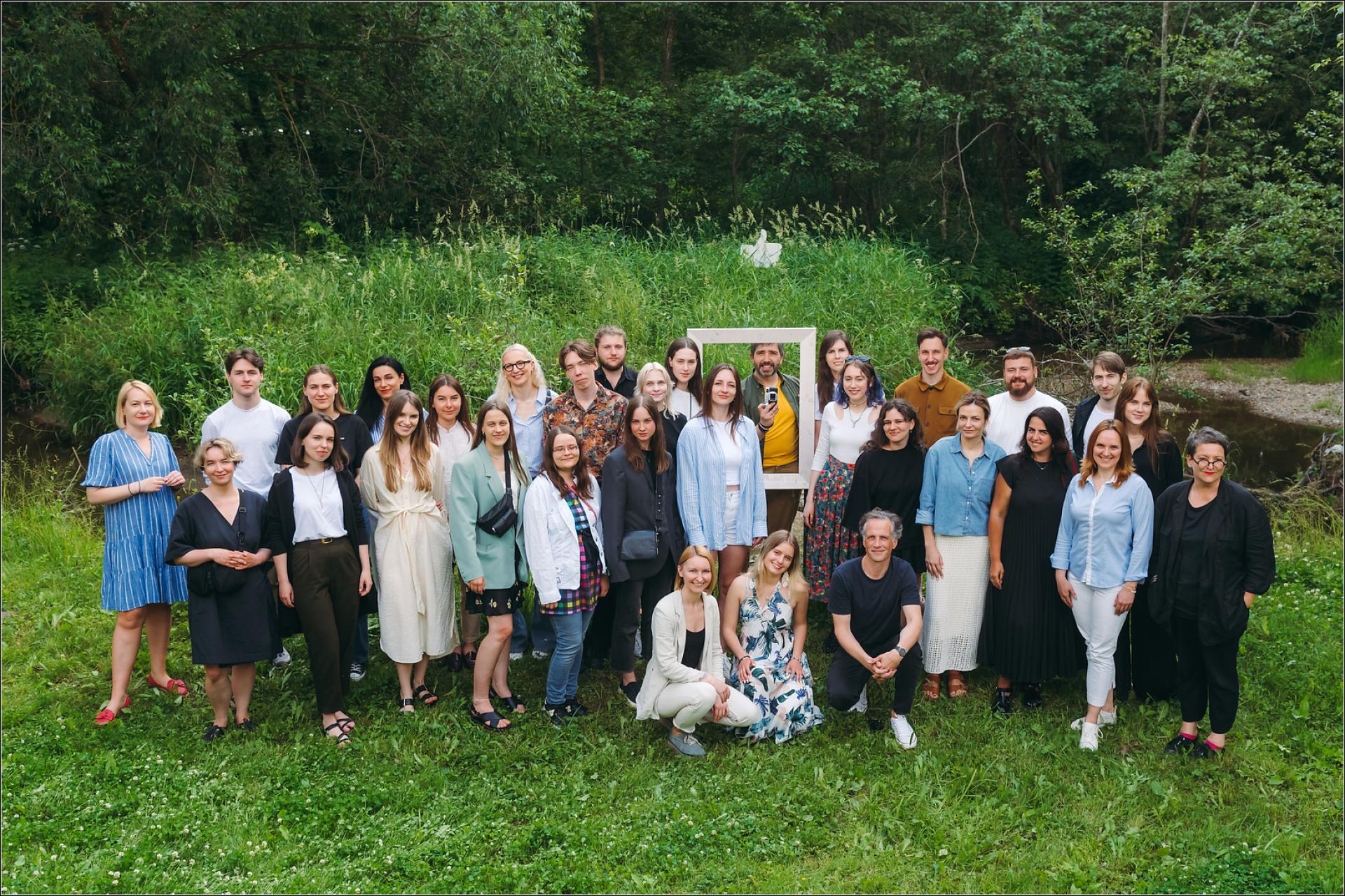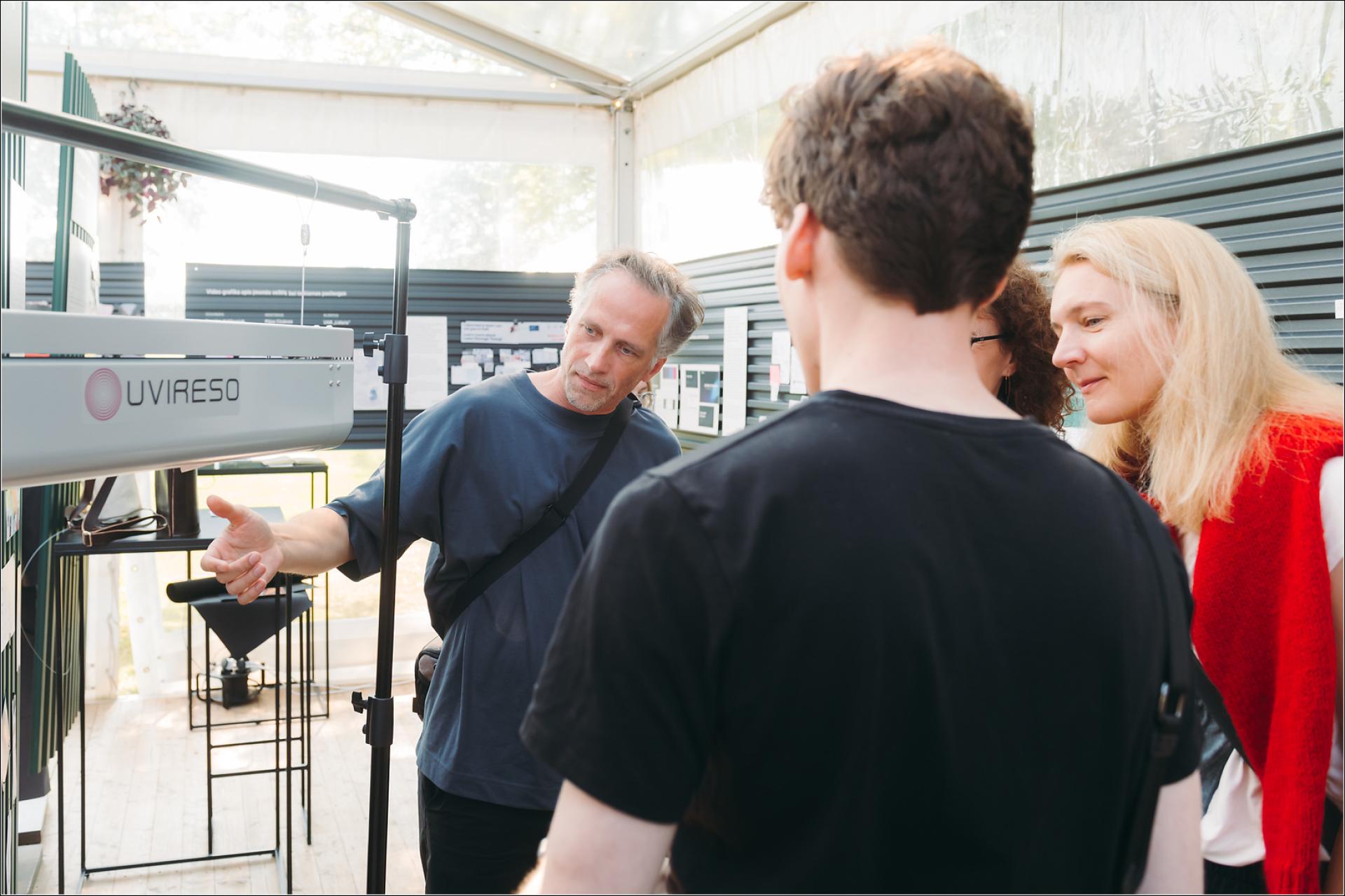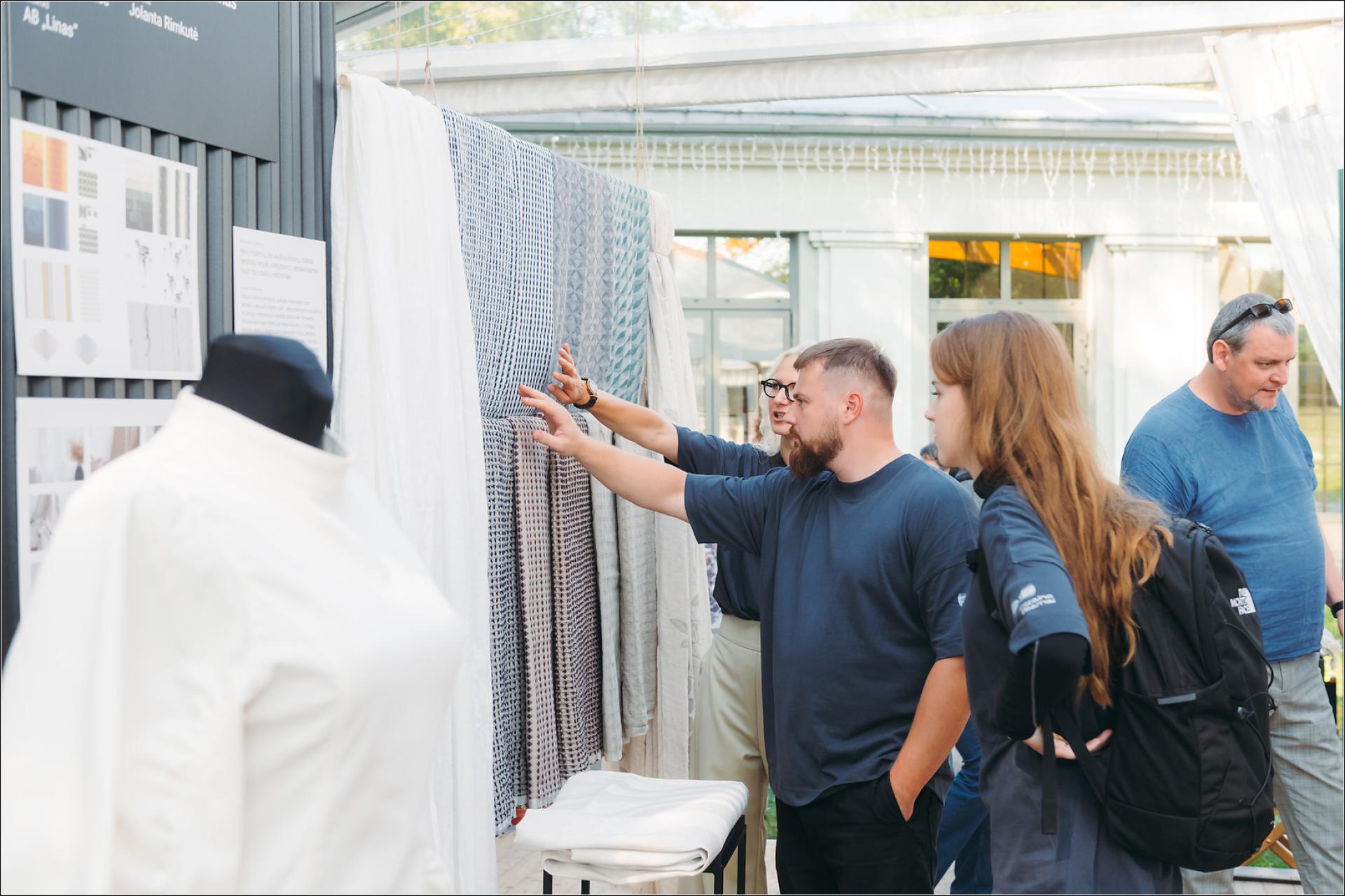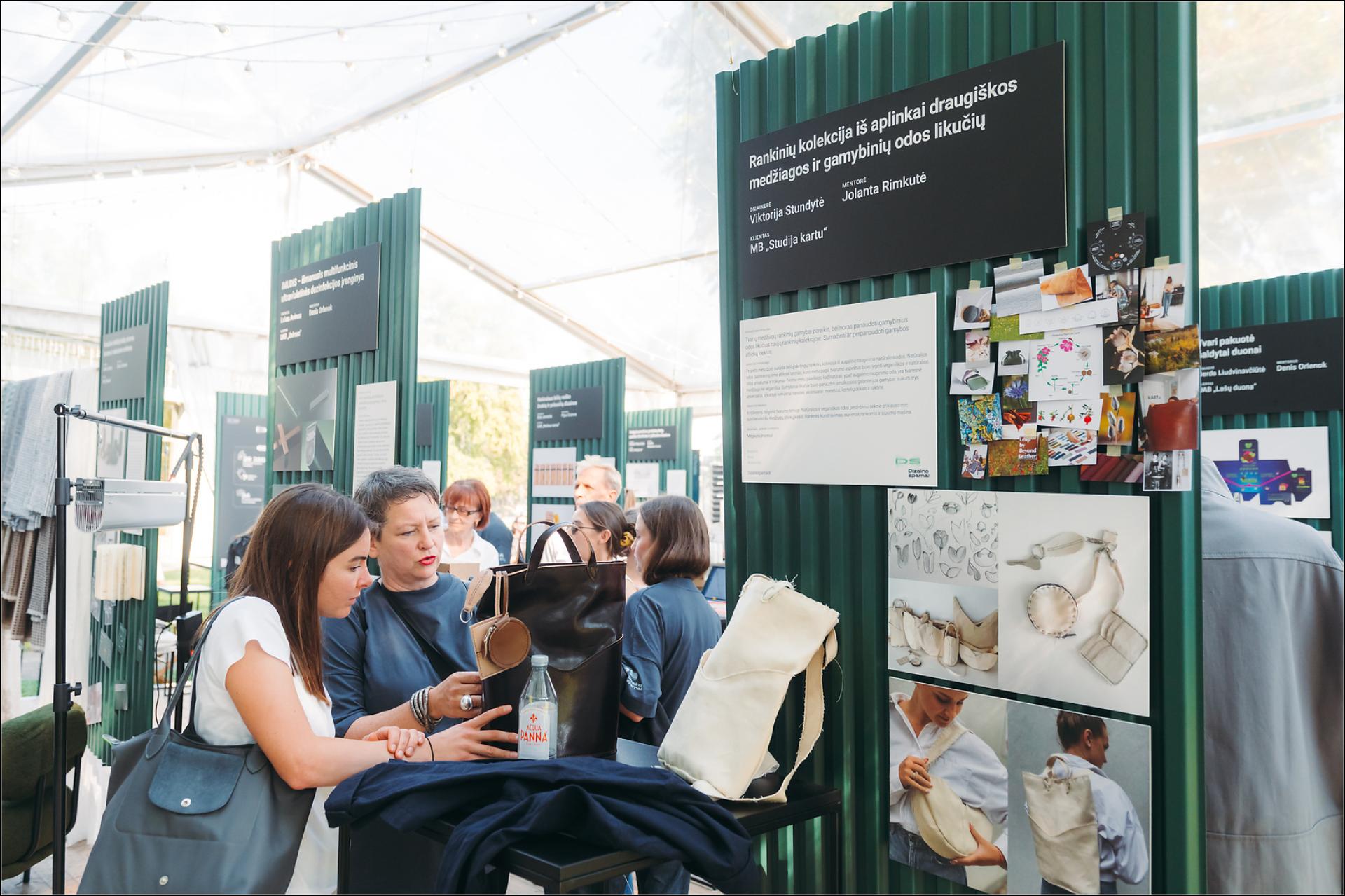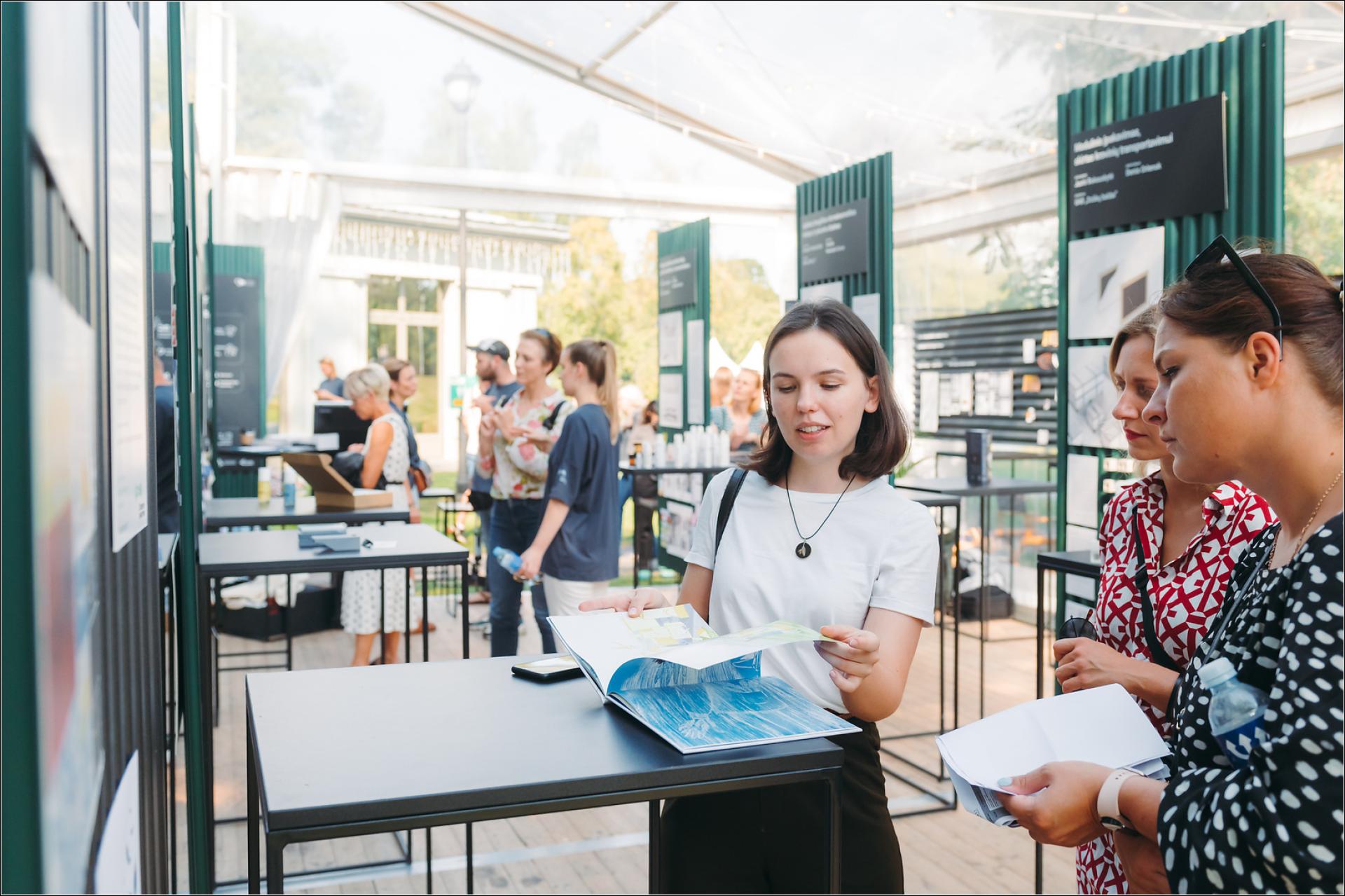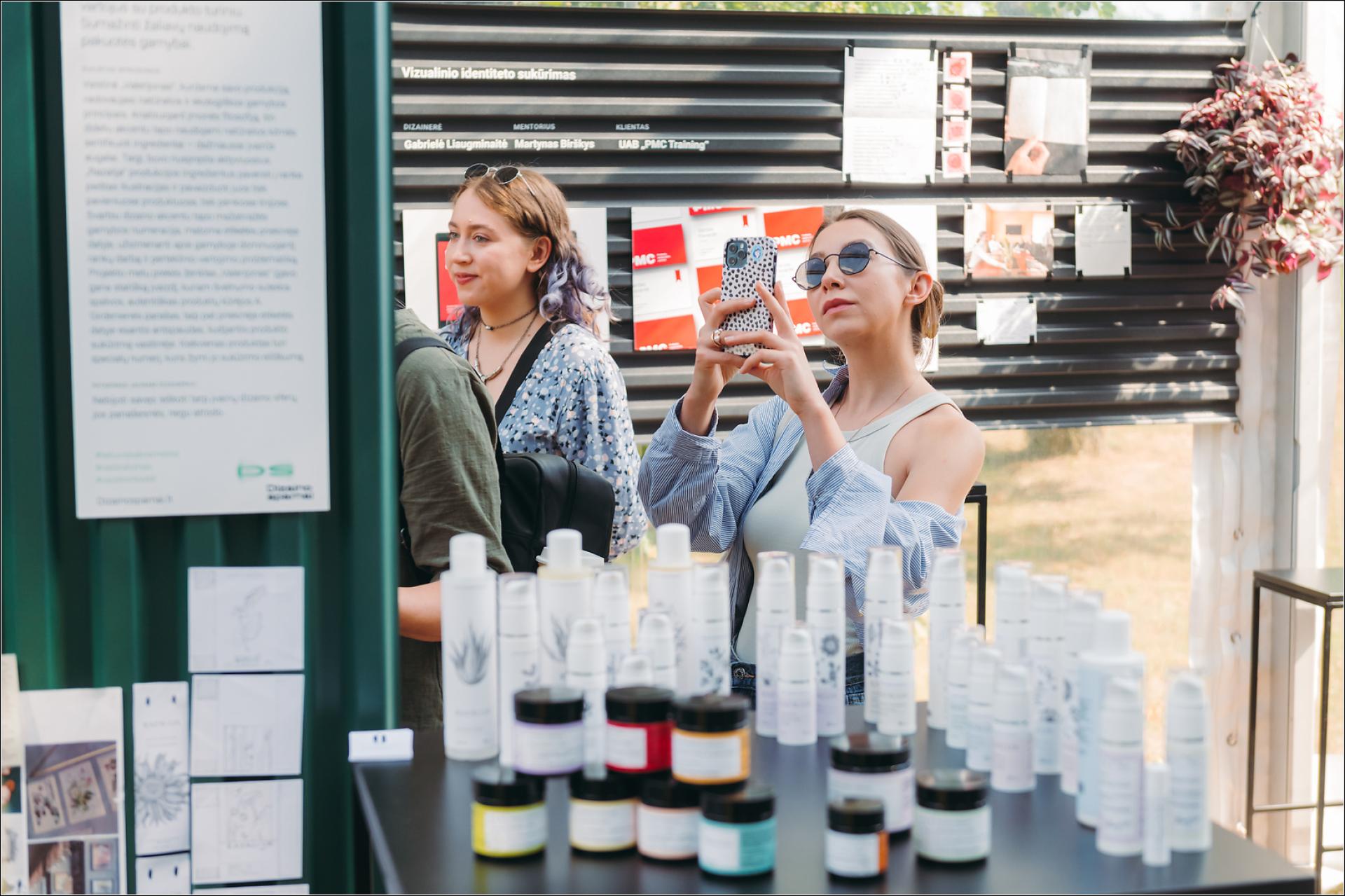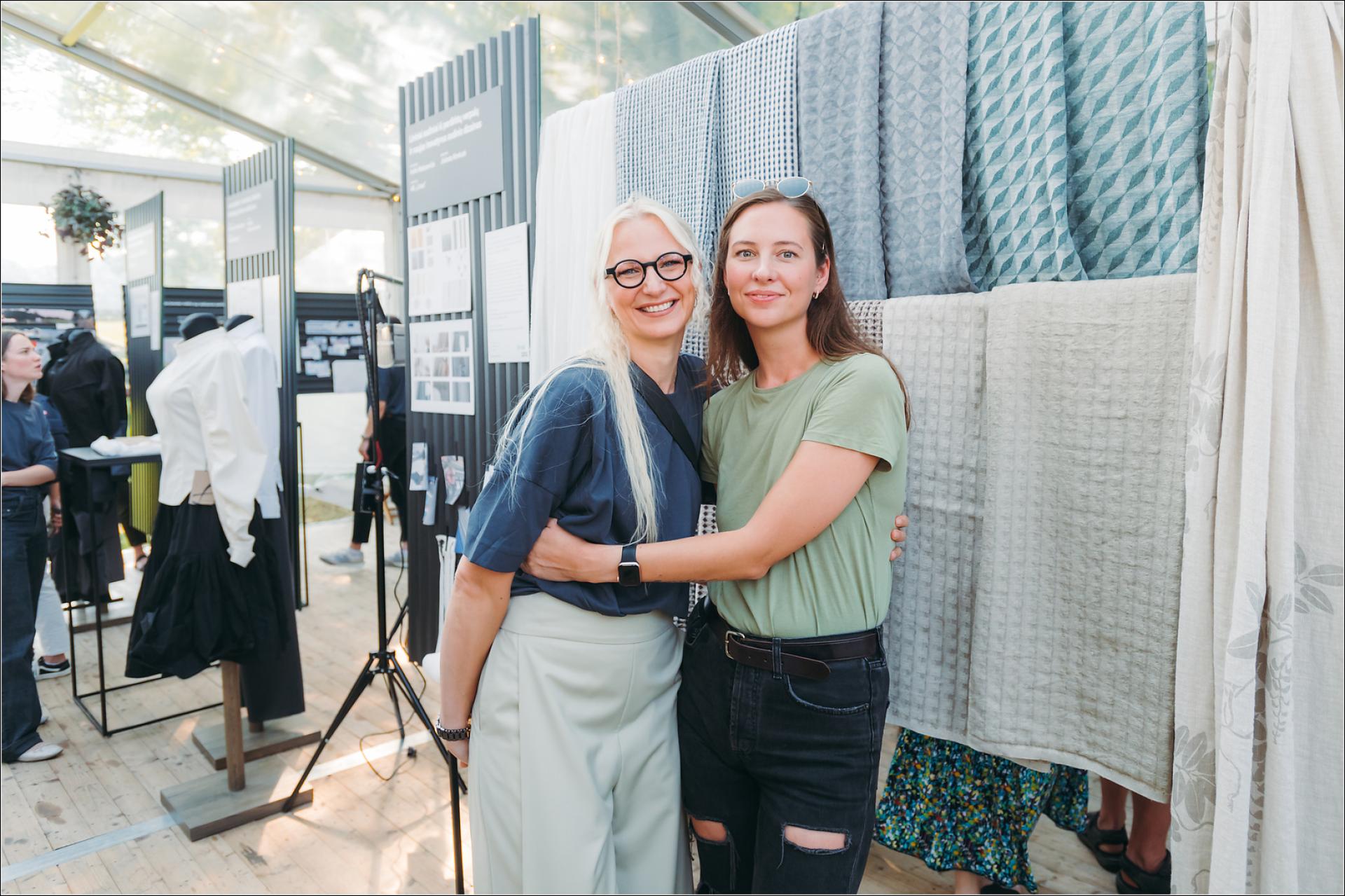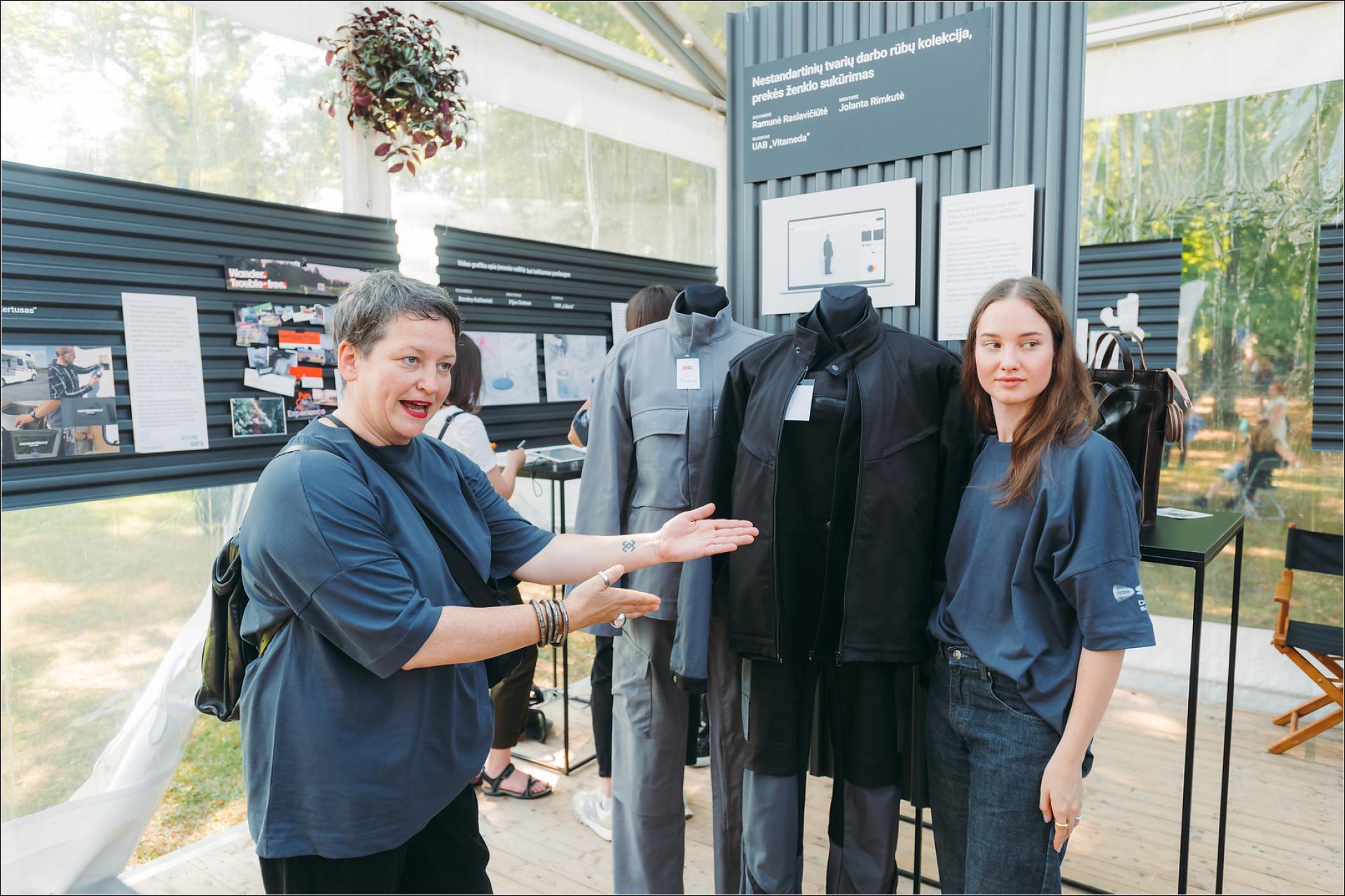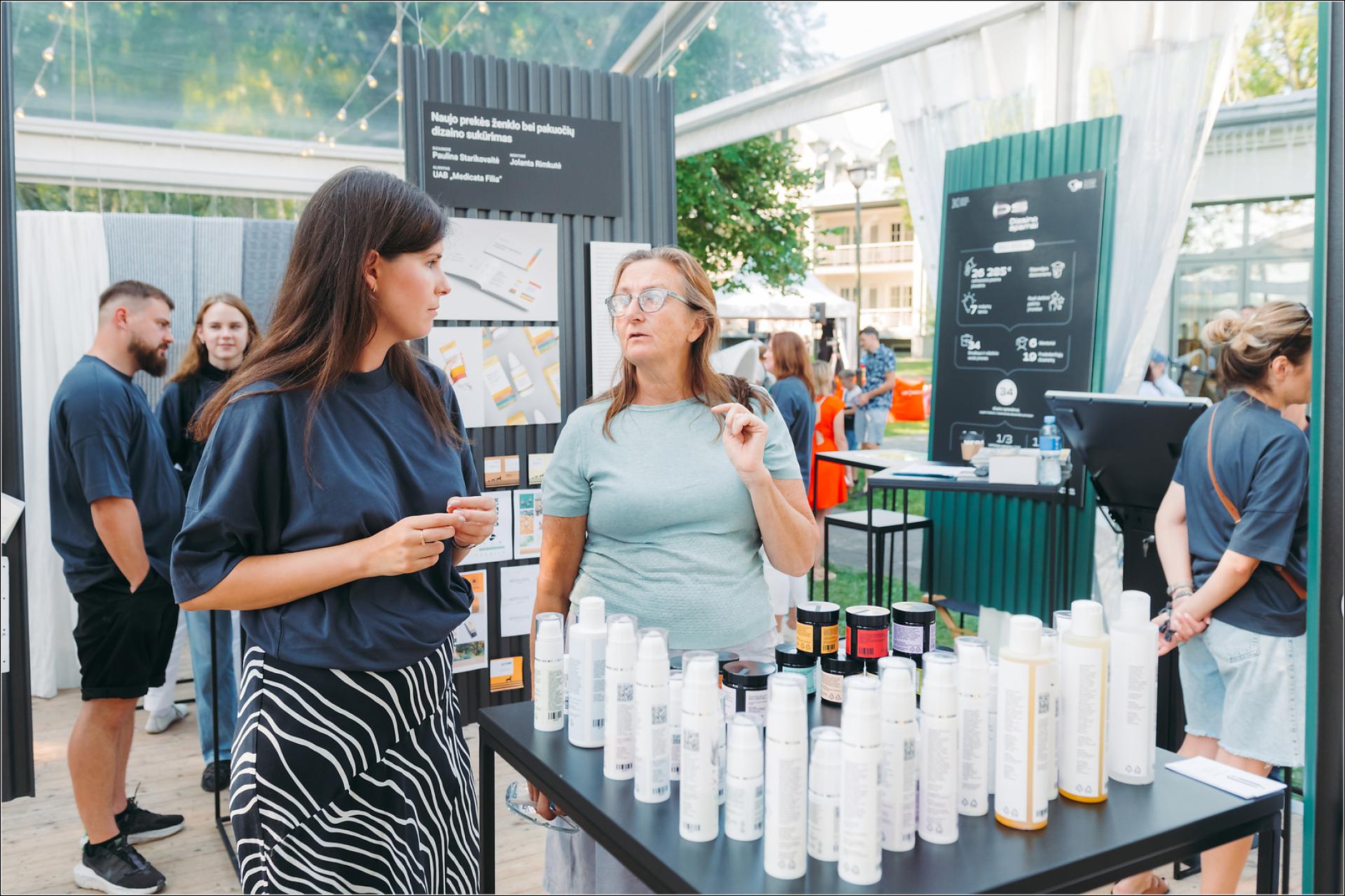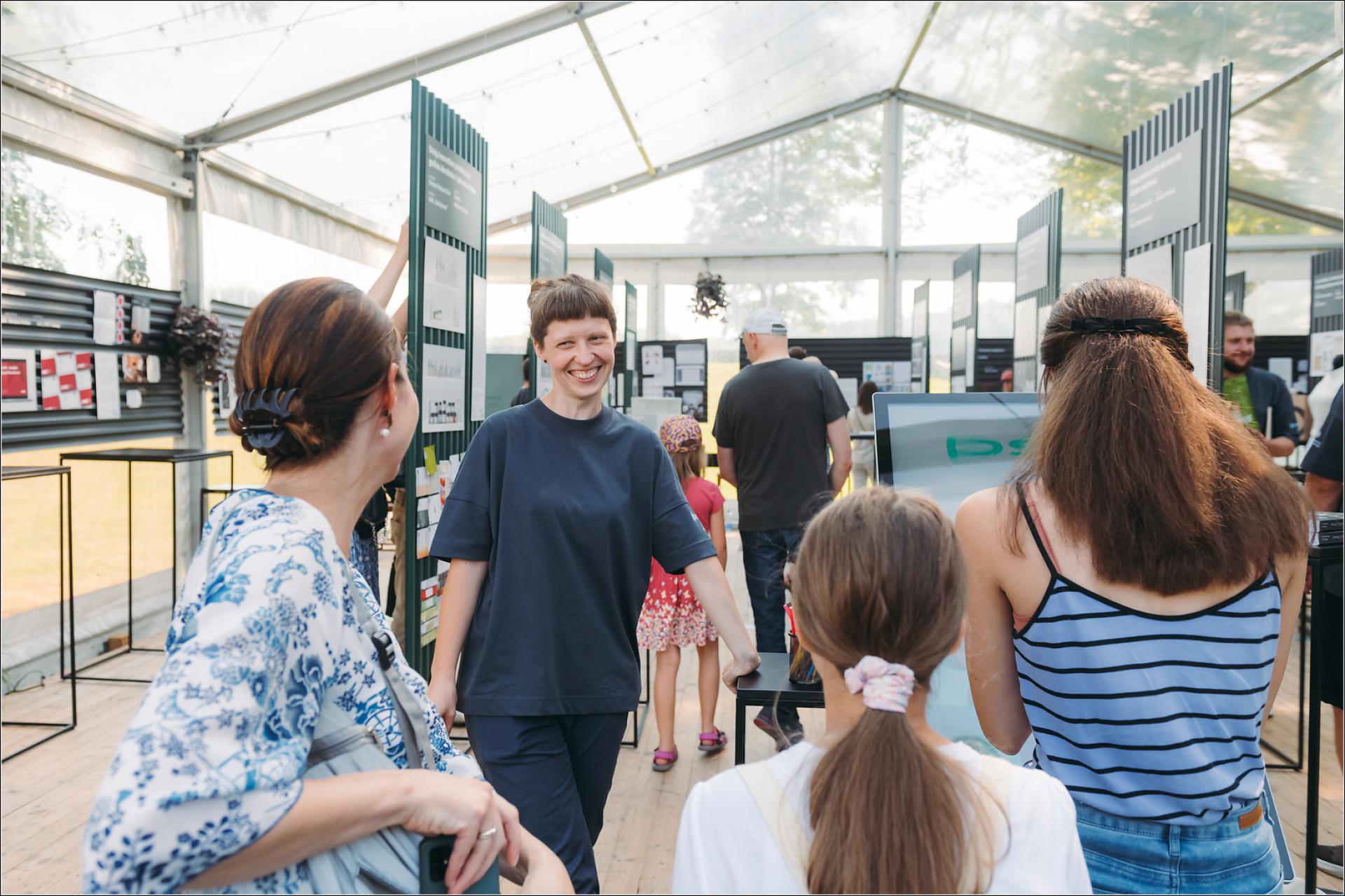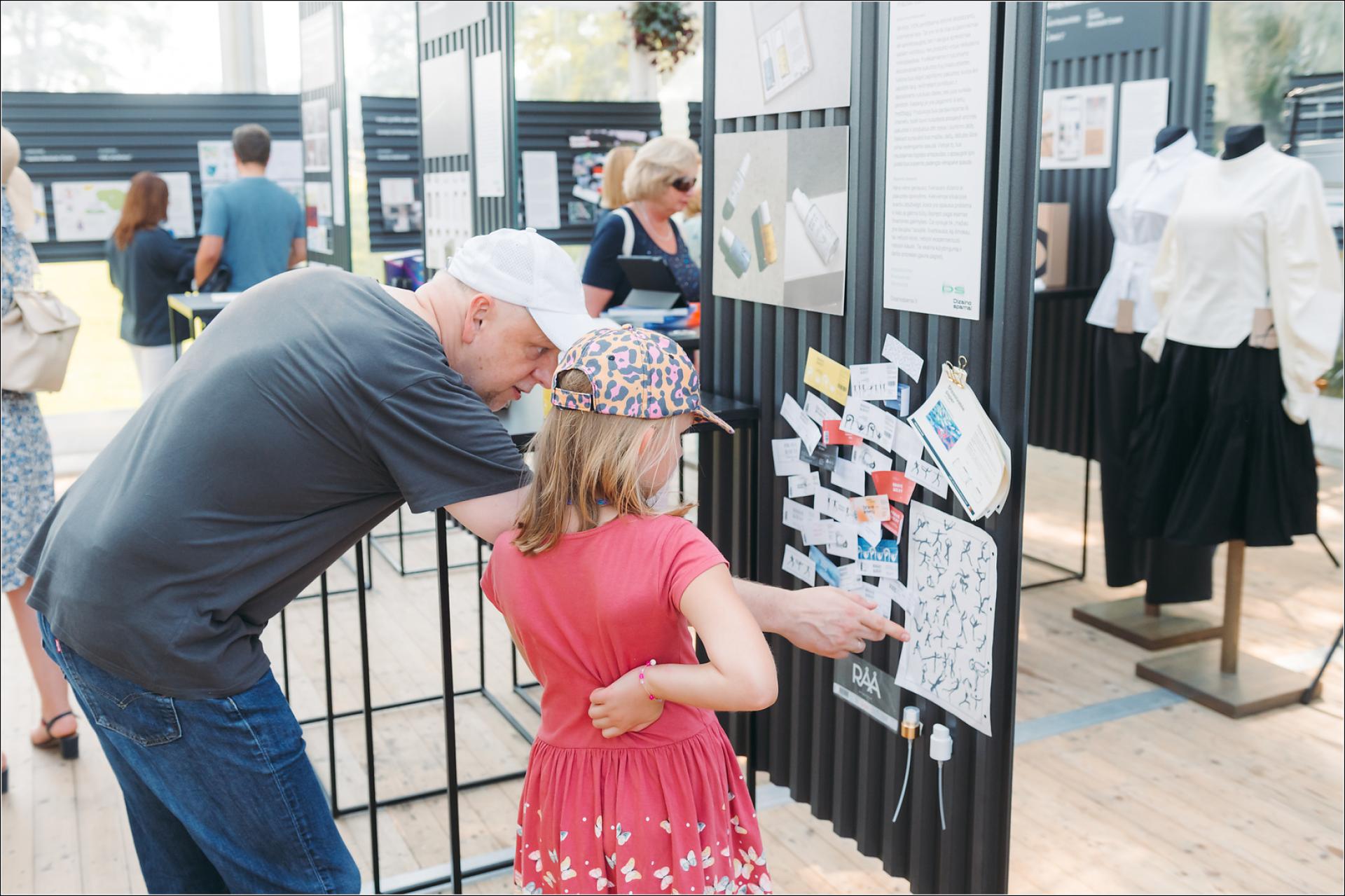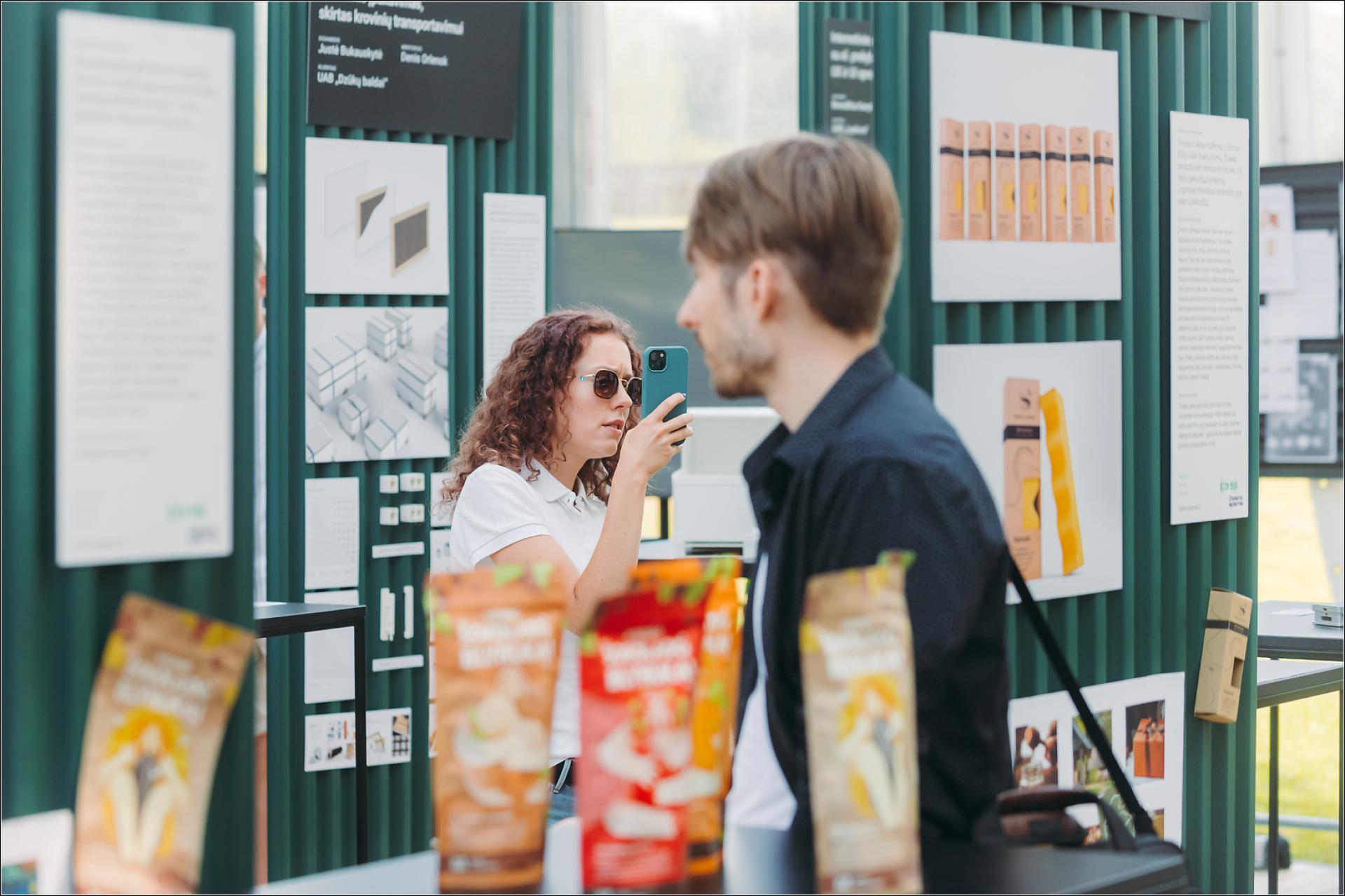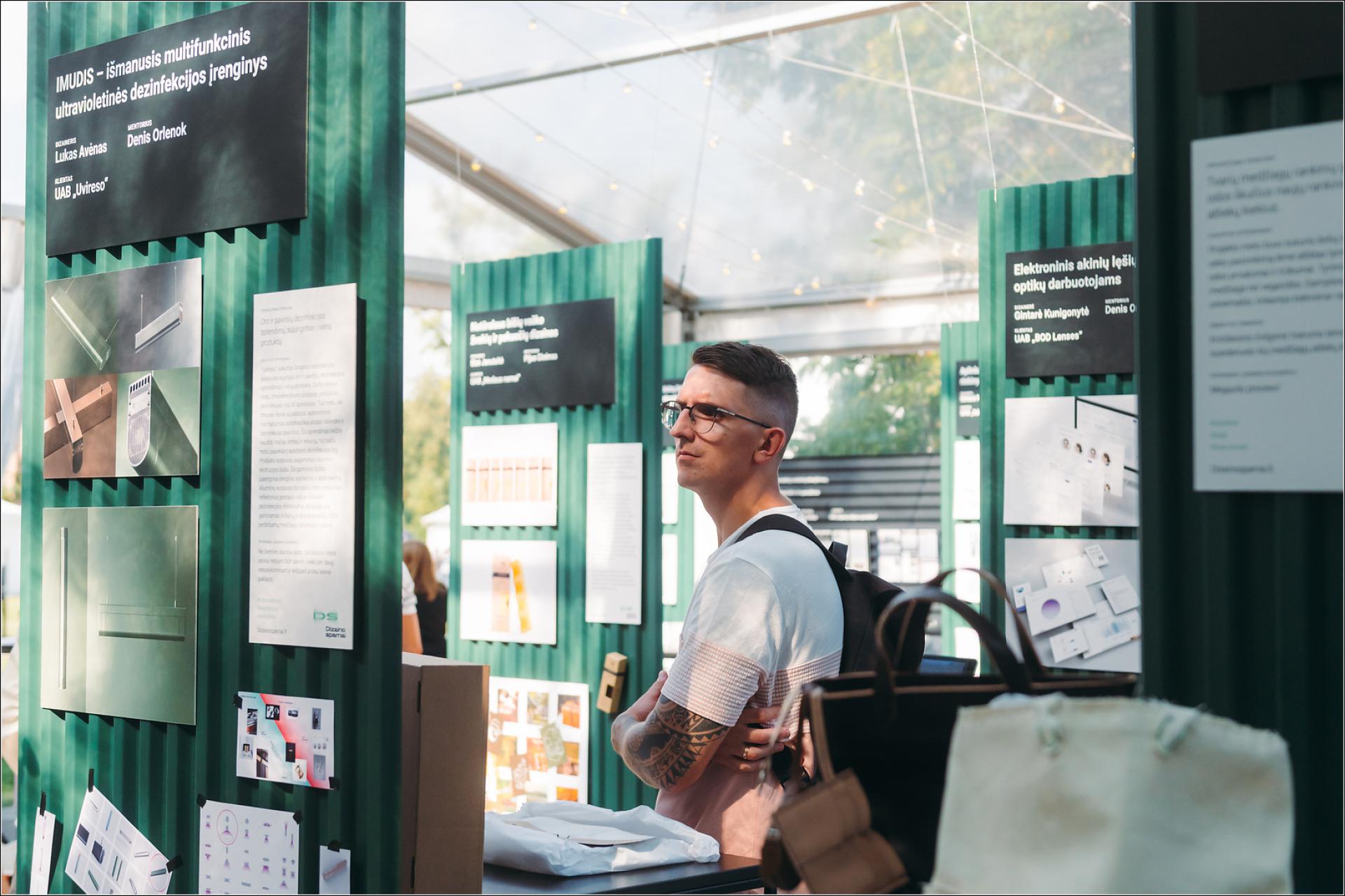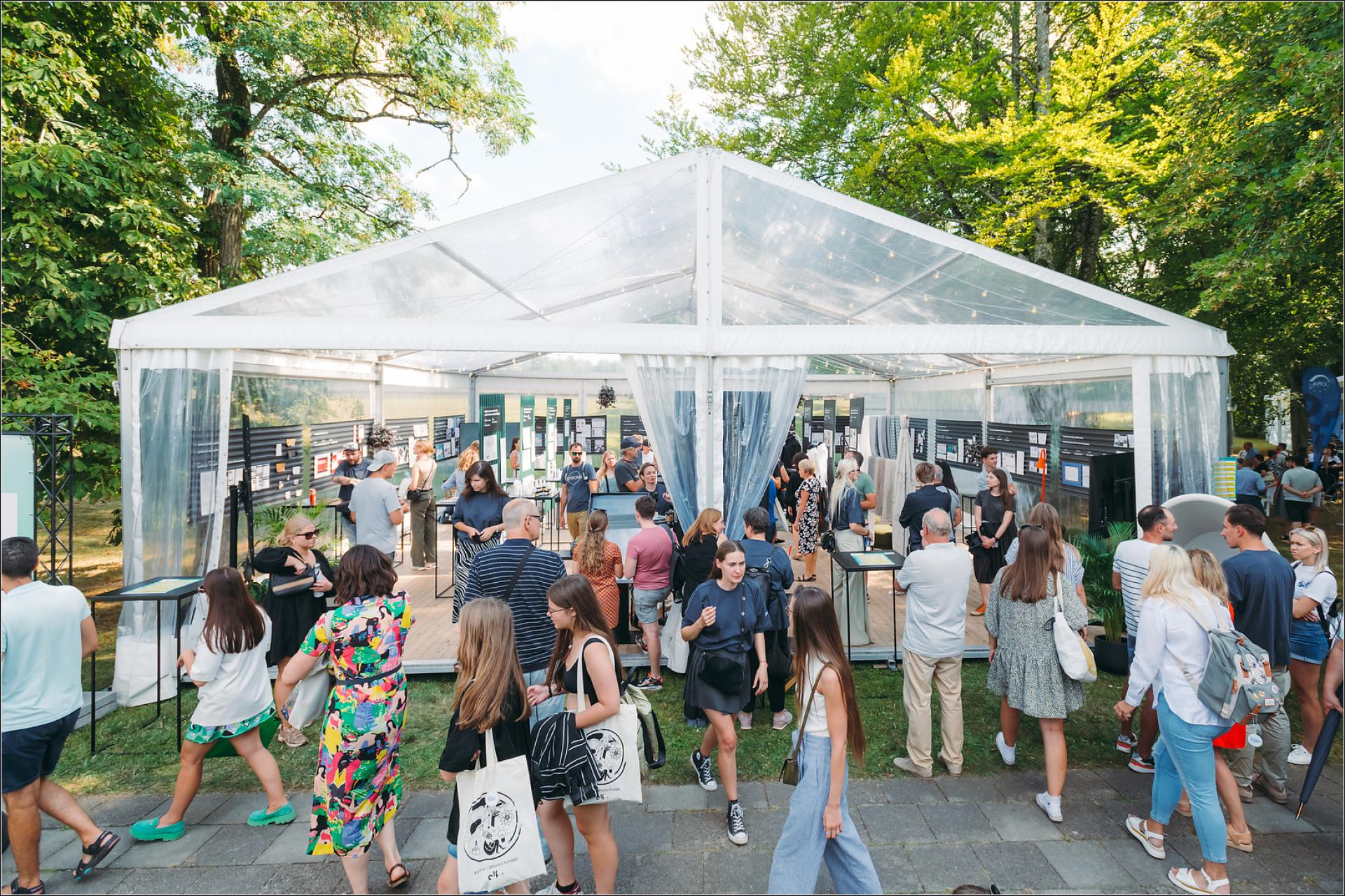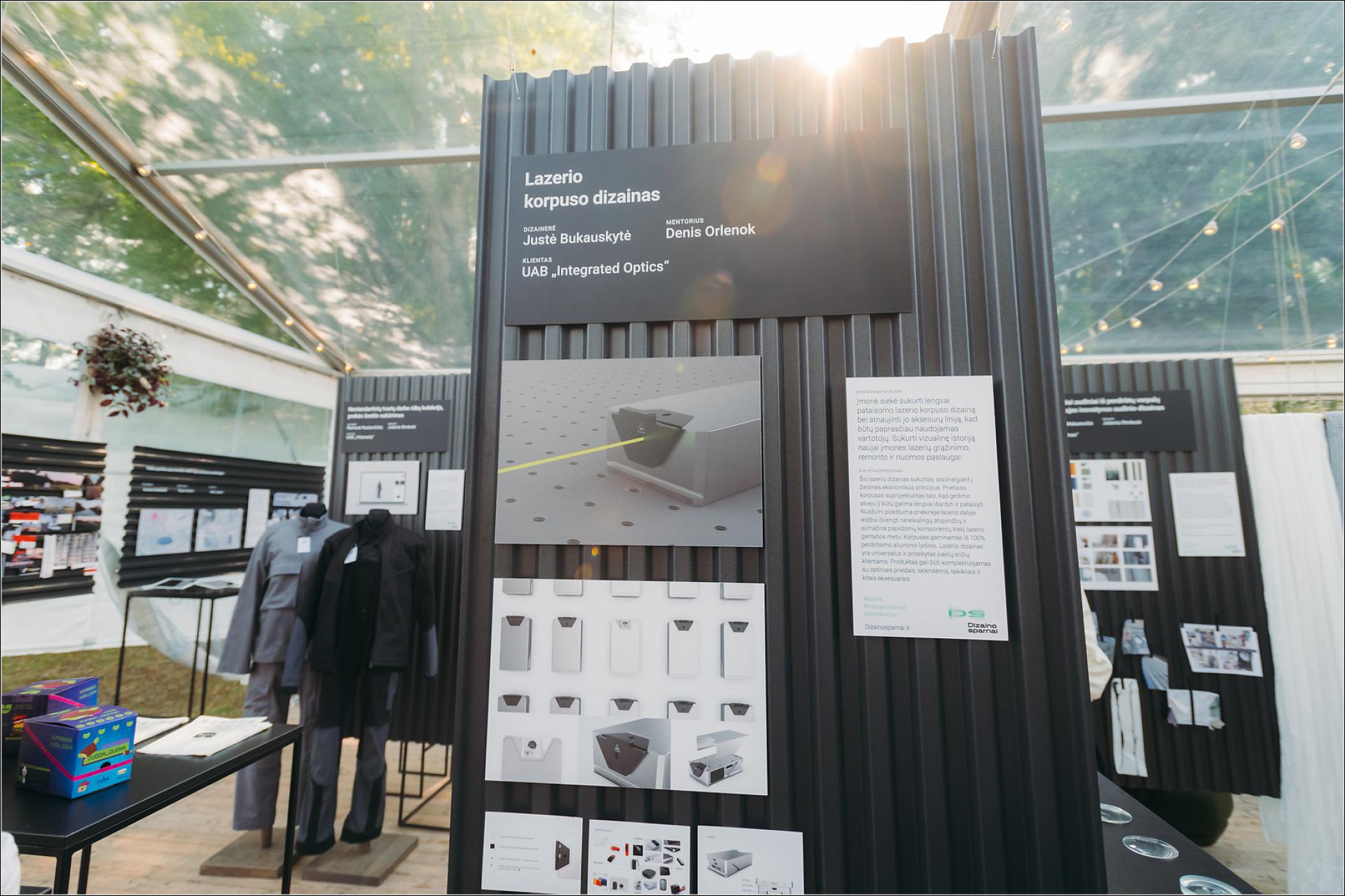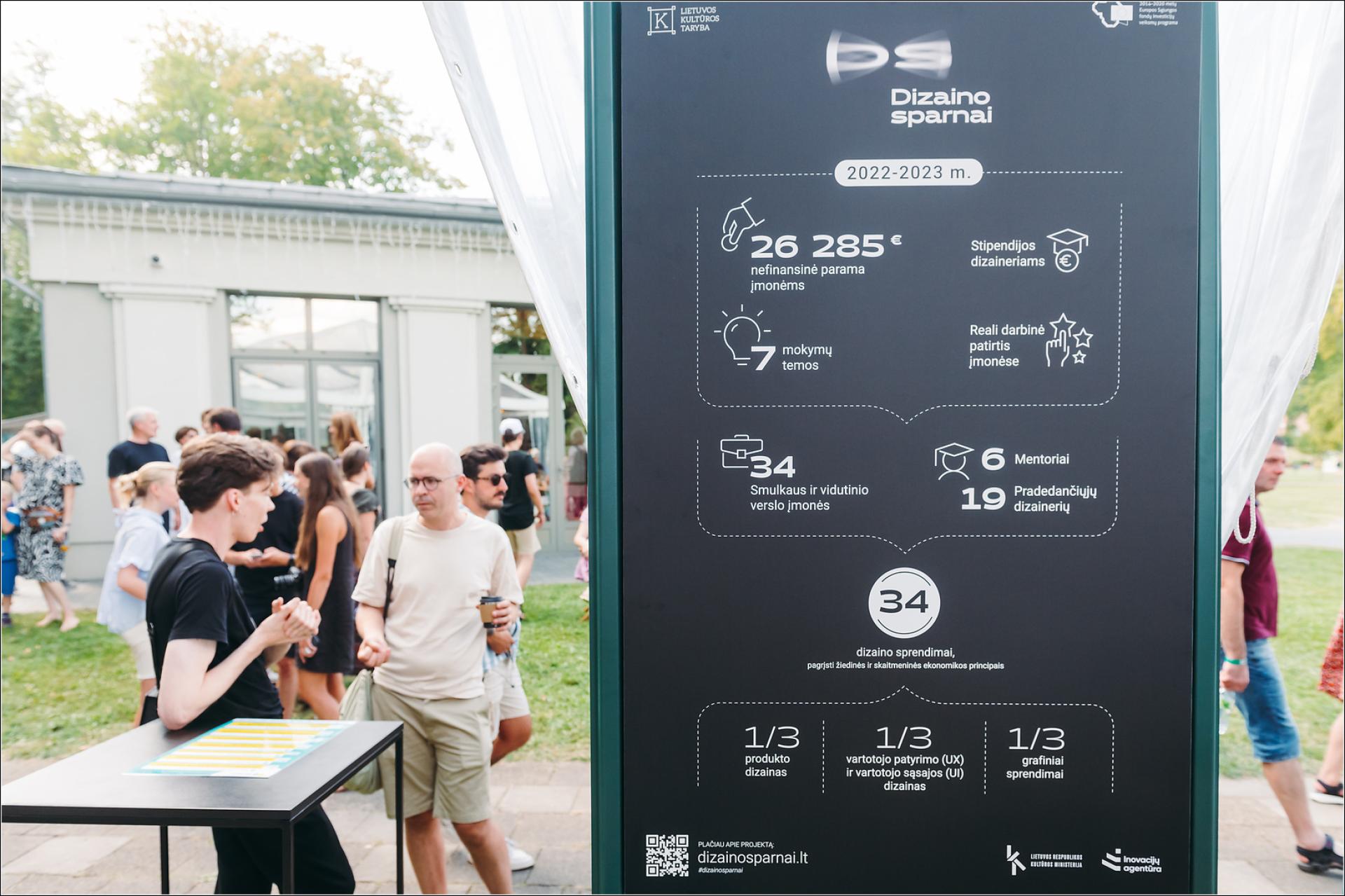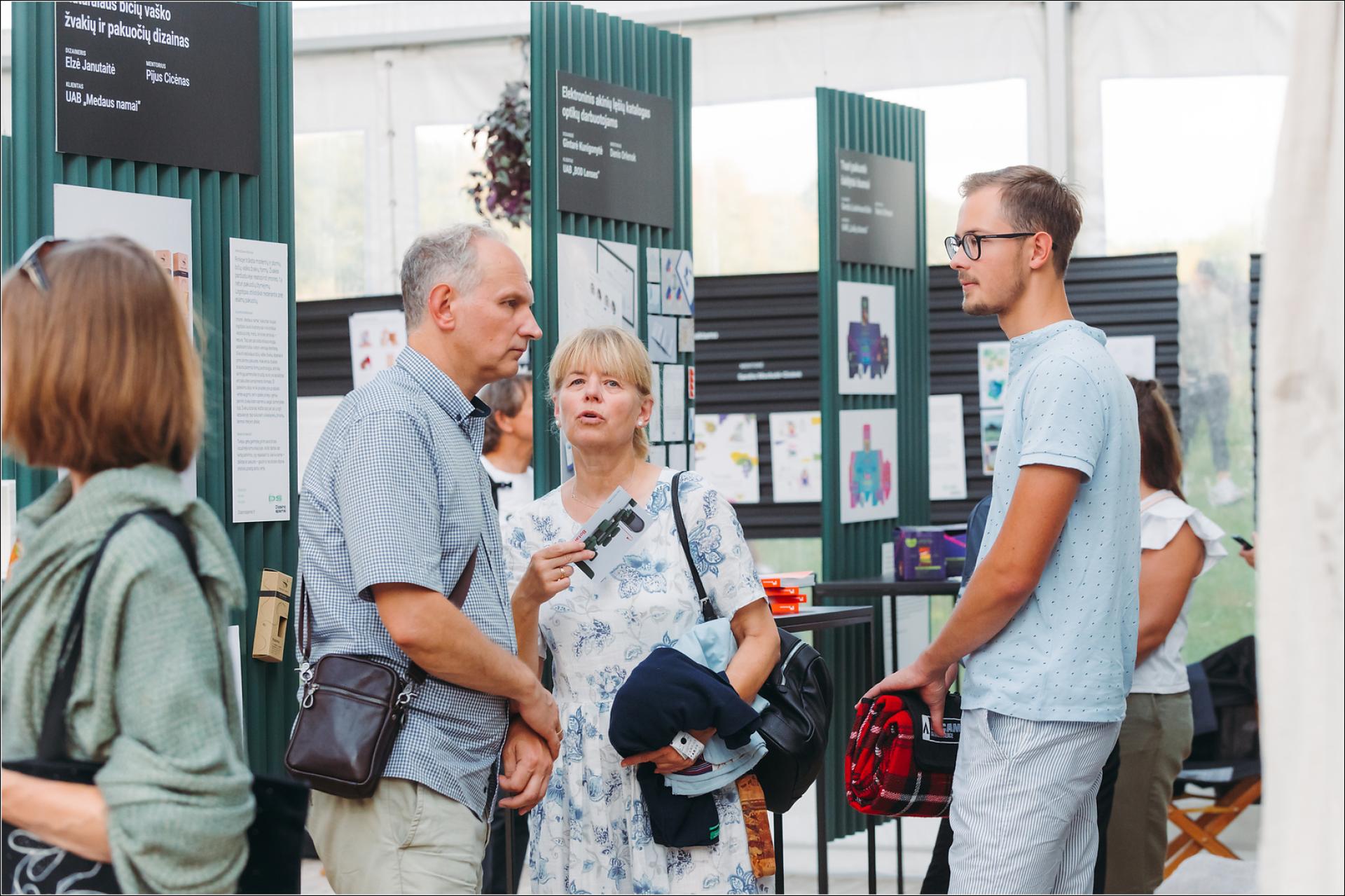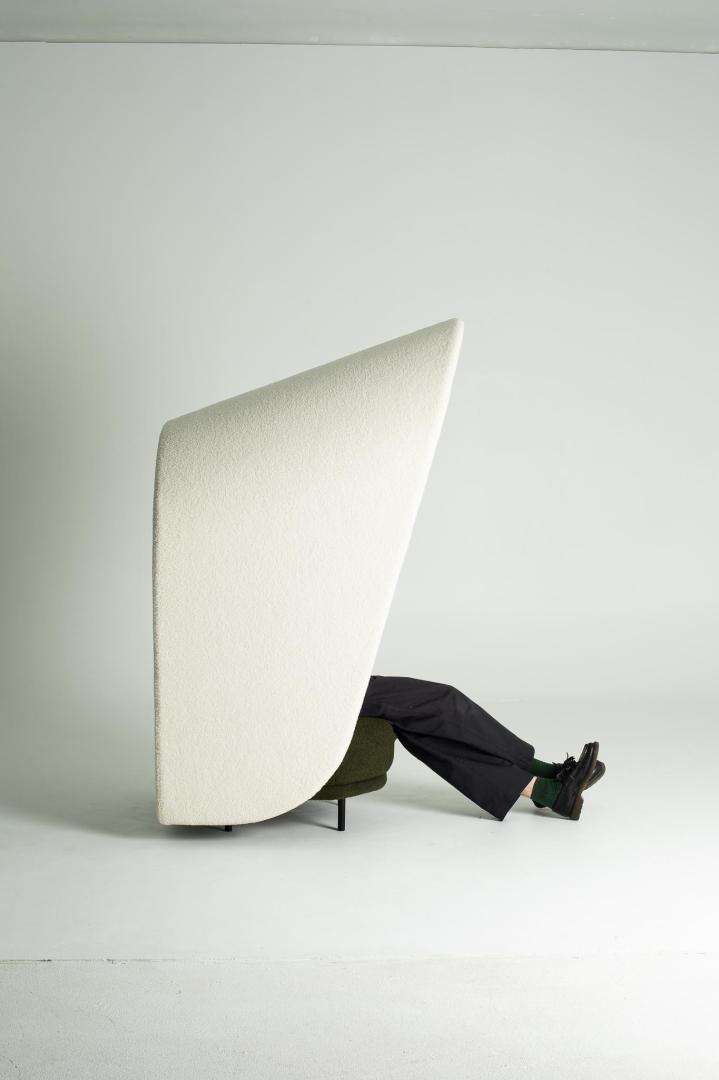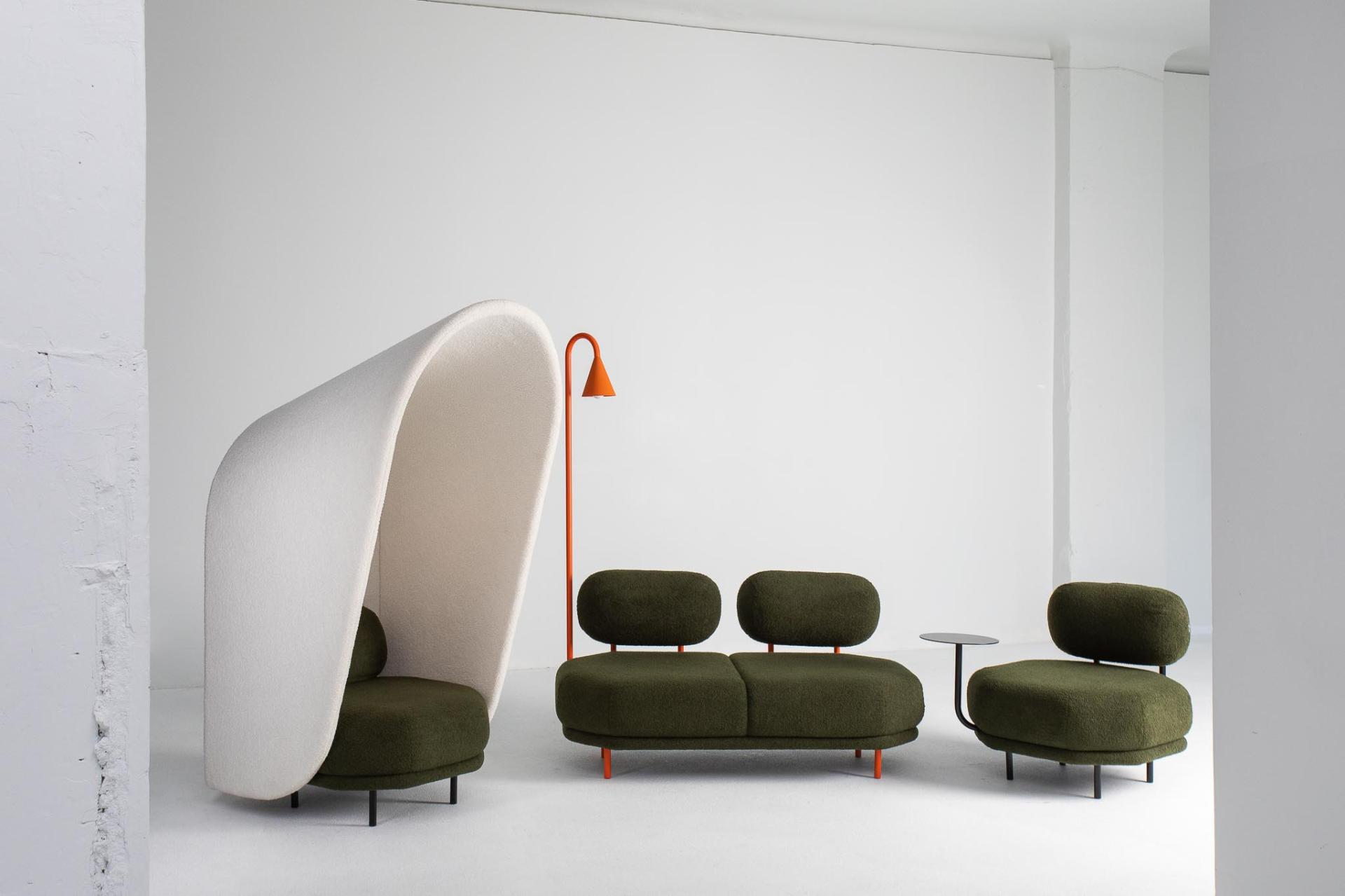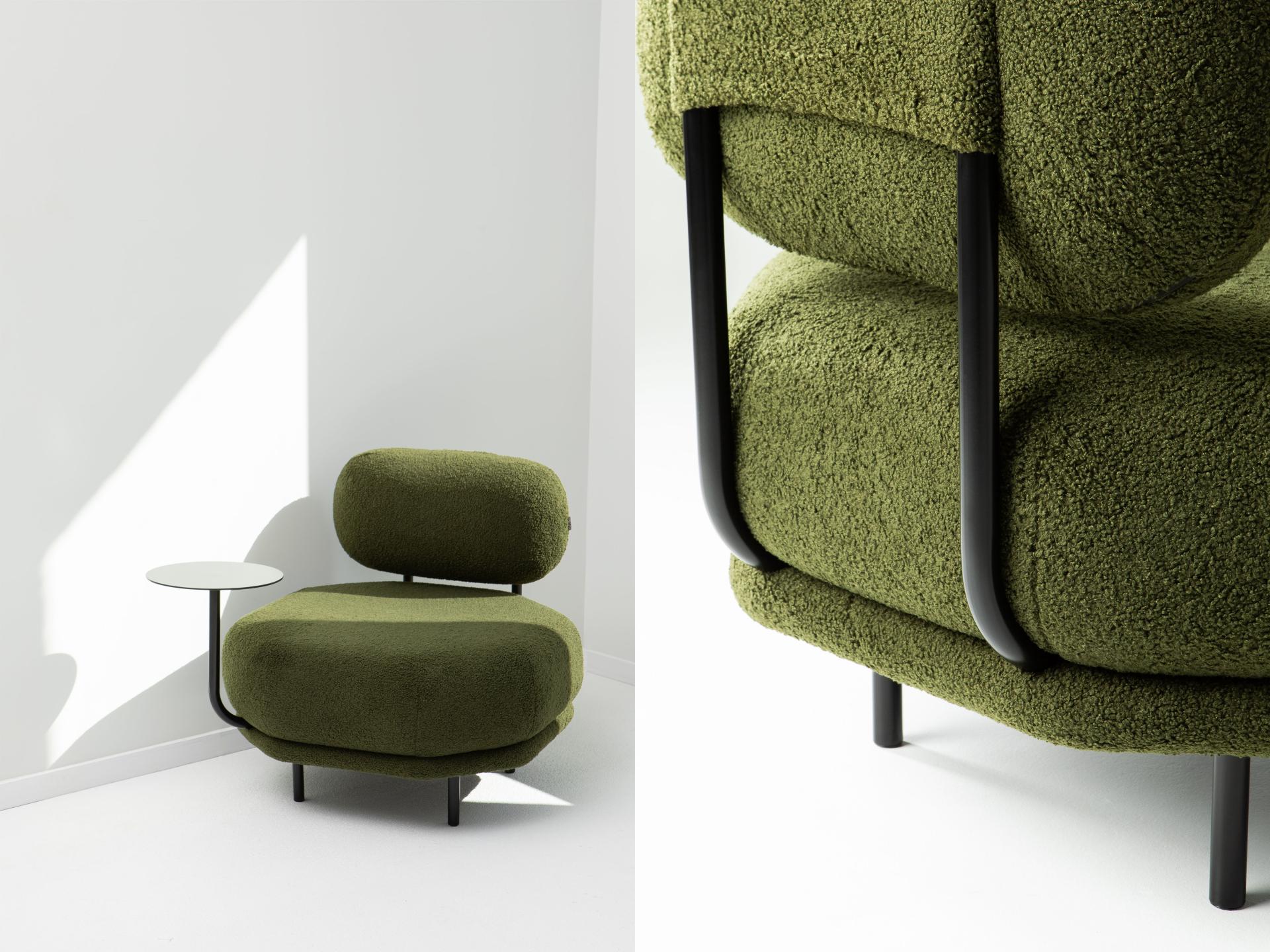Design Wings
Basic information
Project Title
Design Wings
Full project title
Project Design Wings implemented by Lithuanian Council for Culture
Category
Regaining a sense of belonging
Project Description
The project Design Wings is a project of non-financial support that brings together talents, knowledge and experience to create design products and services that are competitive and based on the principles of innovation and the digital and circular economy. The project involves companies from all over Lithuania, for which design solutions are developed by emerging design professionals and supervised by experienced mentors — highly skilled design experts.
Geographical Scope
National
Project Region
Lithuania
Urban or rural issues
It addresses urban-rural linkages
Physical or other transformations
It refers to other types of transformations (soft investment)
EU Programme or fund
Yes
Which funds
ERDF : European Regional Development Fund
Description of the project
Summary
Objective of the project
It is especially important for the Lithuanian business to increase its competitiveness and to orient towards the European Green Deal. It is not possible without well designed solutions and professionals who are able to create them. “Design Wings” is a year long programme that is aimed to foster positive change in connecting recent design graduates, also increase the abilities of states economy to meet the global challenges of pandemics, international competitiveness, efficiency and implementation of circular economy, as well guarantee a permanent economic growth.
Targeted groups:
● Apprentice designers who had completed their studies in 2018-2022. Due to pandemics, they had a lower chance to be employed.
● Small and medium-size Lithuanian enterprises. Due to Innobarometer (2015), 62% of Lithuanian enterprises do not use design but there is a huge potential.
Connecting emerging designers and SMEs result in the benefit they gain from the collaboration. Designers gain a valuable experience while working in the enterprises and solving real problems. Small enterprises often lack finances to employ a professional designer or has a presumption that design services cost a fortune. Meanwhile, taking part give a chance for SMEs to have the “in-house” designer who could thoroughly examine the needs and create an individual design solution that would increase competitiveness of the enterprise.
Goals:
To create design solutions corresponding to the principles of circular economy and digital transition.
To give a chance for design graduates to get real work experience with a support of professionals (mentors)
To improve the quality of local production and competitiveness of enterprises
Results:
34 new design solutions (products and services) were created. All created design solutions are sustainable, decreasing impact on the environment, stimulating the secondary use of the product and encouraging digital transition.
It is especially important for the Lithuanian business to increase its competitiveness and to orient towards the European Green Deal. It is not possible without well designed solutions and professionals who are able to create them. “Design Wings” is a year long programme that is aimed to foster positive change in connecting recent design graduates, also increase the abilities of states economy to meet the global challenges of pandemics, international competitiveness, efficiency and implementation of circular economy, as well guarantee a permanent economic growth.
Targeted groups:
● Apprentice designers who had completed their studies in 2018-2022. Due to pandemics, they had a lower chance to be employed.
● Small and medium-size Lithuanian enterprises. Due to Innobarometer (2015), 62% of Lithuanian enterprises do not use design but there is a huge potential.
Connecting emerging designers and SMEs result in the benefit they gain from the collaboration. Designers gain a valuable experience while working in the enterprises and solving real problems. Small enterprises often lack finances to employ a professional designer or has a presumption that design services cost a fortune. Meanwhile, taking part give a chance for SMEs to have the “in-house” designer who could thoroughly examine the needs and create an individual design solution that would increase competitiveness of the enterprise.
Goals:
To create design solutions corresponding to the principles of circular economy and digital transition.
To give a chance for design graduates to get real work experience with a support of professionals (mentors)
To improve the quality of local production and competitiveness of enterprises
Results:
34 new design solutions (products and services) were created. All created design solutions are sustainable, decreasing impact on the environment, stimulating the secondary use of the product and encouraging digital transition.
Key objectives for sustainability
The goal to create design solutions that meet main principles of circular and digital economy have been succeeded. Different case studies showcase that product’s design may determine up to 80 percent of the product’s impact on the environment. Thus, good design solutions are based not only on the principles of recycling and repairing but also on long lasting products that have an added value and could sometimes serve for few generations. Principles of the digital economy as well enable to create versatile and more eco-friendly design solutions, decreasing the input and the trace of carbon emissions. Small enterprises, especially in the regions, often lack particular knowledge about sustainability and how it can be integrated into the design of the product or the service but with a help of designer and design professional can achieve big goals.
Key objectives for aesthetics and quality
Various surveys disclose that people are eager to choose sustainable products, contributing to the saving of the environment. Design solutions meeting the requirements of circular and digital economy created in the scope of the project has a higher aesthetic value and seems more attractive because they have been created by the emerging design professionals who were guided by the experienced mentors. There is no doubt that attractive and contemporary design strengthened competitive advantages of the enterprises, e. g., rendering sustainable services (tours on foot to the residential areas, articles manufactured using local products and sold only in the local market). This project can become an exemplary one because apprentice designers create professional, analytically grounded, aesthetically attractive and relevant design solutions.
Key objectives for inclusion
This project involved various people – businessmen, designers, mentors – possessing different skills and experiences, coming from all parts of the country. One of the benefits is that Lithuanians who graduated abroad were welcomed to come back home and work for a local business. The project has been communicated in Lithuanian and English with a goal to expand the invitation for Belarusians who were running from dictatorship (one designer is successfully working at the project) and Ukrainians who had to leave their country due to the Russian invasion. All the participants of the project, who we define as the community, have a possibility to communicate one with another on-line and during live meetings where they share their experiences and ideas. The work regarding design solutions is carried out on the inclusion basis: designers can receive an assistance or advice from the professional of the different design branch (graphic, product, service, fashion or UX) in case it is necessary. Design solutions meet design for all principles because they correspond to the principles of circular economy, i. e., they are environment-friendly and do not cause consequences for the future generations and nature. The key Design Thinking principles are always in use.
Results in relation to category
Results, outcomes and impacts achieved by the project
● Apprentice designers affected by the pandemic financially and professionally, improve their skills, acquire new knowledge and establish new contacts.
● Small and medium-size enterprises not only acquire theoretical knowledge but also receive tangible design solutions created according to their needs. Particularly designed solutions increase enterprise competitiveness, enabling them to implement principles of circular and digital economy in their business.
● 34 design solutions meeting sustainability and circular economy principles that are at once commercialized, adapted for the production and realisation were created during the project.
● Indirect beneficiaries of the project are potential customers of these enterprises who will be able to benefit from the sustainable, aesthetic and convenient design solutions. These products will enable customers to spare funds because their design is adapted for the secondary use, the use of the product without residual, repairing and etc.
● The project demonstrates the real added value that design creates and might encourage other companies to invest more into design and R&D.
● Apprentice designers affected by the pandemic financially and professionally, improve their skills, acquire new knowledge and establish new contacts.
● Small and medium-size enterprises not only acquire theoretical knowledge but also receive tangible design solutions created according to their needs. Particularly designed solutions increase enterprise competitiveness, enabling them to implement principles of circular and digital economy in their business.
● 34 design solutions meeting sustainability and circular economy principles that are at once commercialized, adapted for the production and realisation were created during the project.
● Indirect beneficiaries of the project are potential customers of these enterprises who will be able to benefit from the sustainable, aesthetic and convenient design solutions. These products will enable customers to spare funds because their design is adapted for the secondary use, the use of the product without residual, repairing and etc.
● The project demonstrates the real added value that design creates and might encourage other companies to invest more into design and R&D.
How Citizens benefit
The apprentice designers who have completed their studies in 2018-2022 were invited to take part in the project because as the employees of the creative segment they were affected by the COVID-19 pandemic, lost their income and possibility to improve professional skills. In the course of the project, they receive scholarships, improve their professional skills and fetch professional ethics while collaborating with the enterprise. The other group benefiting from the project are representatives of small and medium-size businesses who do not have the possibility to employ designers paying them the market price. Professional design solutions that are created in the course of the project for them for free help to increase competitiveness of the enterprise, to expand business offering new or improved products and services. Civil society and citizens are involved into the project by consuming the created design products that meet the requirements of sustainability and principles of circular economy. Thus, the circular economy is as well entrenched.
Physical or other transformations
It refers to other types of transformations (soft investment)
Innovative character
This project is of the innovative character because:
● Involves potential of young creators, renders them the platform to implement their ideas and to gain professional experience.
● Enables small and medium-size enterprises to receive sustainable design solutions that correspond the principles of the circular economy
● Educates businessmen and designers’ community about the benefits of the circular and digital economy to the business
● Involves potential of young creators, renders them the platform to implement their ideas and to gain professional experience.
● Enables small and medium-size enterprises to receive sustainable design solutions that correspond the principles of the circular economy
● Educates businessmen and designers’ community about the benefits of the circular and digital economy to the business
Disciplines/knowledge reflected
This is a project where different design disciplines cross each other – graphic, product, fashion and UX design sometimes merge and lead to wonderful results.
There are three key elements of the programme – young designers, design professionals and SMEs. A part of the programme was dedicated for learning - all participants received an extra special training in marketing, sustainability, digitalization, administration, office culture and etc. When everybody where on the same page, enterprises started to work closely with a designer, mentors were constantly supervising the process, giving advice. All six mentors were meeting once a week to share experience, news and challenges. The administrative personnel were always monitoring the process, meeting at least once a week. All reporting was done monthly for the Agency of Innovation, while representatives from the Ministry of Culture where coming constantly to the events.
There are three key elements of the programme – young designers, design professionals and SMEs. A part of the programme was dedicated for learning - all participants received an extra special training in marketing, sustainability, digitalization, administration, office culture and etc. When everybody where on the same page, enterprises started to work closely with a designer, mentors were constantly supervising the process, giving advice. All six mentors were meeting once a week to share experience, news and challenges. The administrative personnel were always monitoring the process, meeting at least once a week. All reporting was done monthly for the Agency of Innovation, while representatives from the Ministry of Culture where coming constantly to the events.
Methodology used
Special methods and criteria were used during designers and companies selection procedure.
Designers meeting the below mentioned criteria are entitled to submit applications:
● Have a university or higher college degree in design with a bachelor's or master's degree or equivalent, obtained no earlier than 2018;
● Not currently employed;
● Still studying in higher education but are applying for an activity that is not part of the curriculum;
● Has a diploma of design study programme, a curriculum vitae and a description of his (her) creative activity.
● Planning to reside in Lithuania until 31 August 2023
● Non-Lithuanian citizen, yet able to communicate and perform tasks in Lithuanian or English.
Enterprises meeting the below mentioned criteria are entitled to submit applications:
● Meeting the criteria for the category of micro, small and medium-sized enterprises defined in the Law on Small and Medium-Sized Business Development.
● Operating more than a year; registered in the Register of Legal Entities; generating income and periodically reporting to the responsible public authorities;
● With the average income since the day of registration or over the last 3 financial years amounting to at least EUR 50 000;
● Have not received funding under the „Creative Vouchers COVID-19“ financial support instrument;
● Have repaid support previously received which was declared unlawful by the European Commission;
● Not subject to international sanctions and not involving the participation of entities subject to such sanctions in their activities.
All the applications are submitted on-line, afterwards administrative compliance of the requirements is assessed, later the expert assessment is carried out.
Designers meeting the below mentioned criteria are entitled to submit applications:
● Have a university or higher college degree in design with a bachelor's or master's degree or equivalent, obtained no earlier than 2018;
● Not currently employed;
● Still studying in higher education but are applying for an activity that is not part of the curriculum;
● Has a diploma of design study programme, a curriculum vitae and a description of his (her) creative activity.
● Planning to reside in Lithuania until 31 August 2023
● Non-Lithuanian citizen, yet able to communicate and perform tasks in Lithuanian or English.
Enterprises meeting the below mentioned criteria are entitled to submit applications:
● Meeting the criteria for the category of micro, small and medium-sized enterprises defined in the Law on Small and Medium-Sized Business Development.
● Operating more than a year; registered in the Register of Legal Entities; generating income and periodically reporting to the responsible public authorities;
● With the average income since the day of registration or over the last 3 financial years amounting to at least EUR 50 000;
● Have not received funding under the „Creative Vouchers COVID-19“ financial support instrument;
● Have repaid support previously received which was declared unlawful by the European Commission;
● Not subject to international sanctions and not involving the participation of entities subject to such sanctions in their activities.
All the applications are submitted on-line, afterwards administrative compliance of the requirements is assessed, later the expert assessment is carried out.
How stakeholders are engaged
Lithuanian Design Ecosystem has been mapped and the Lithuanian Design Action Plan has been created in 2016 in the scope of Design for Europe project with a help of Dr. Anna Whicher. During the workshops that were organised in a scope of a study, different stakeholders identified the limited continuous professional development for designers. According to the Innobarometer 2015, only 6% Lithuanian companies consider design as strategy (EU average is 13%).
The whole idea of the project came up in the summer of 2020 while the working group has gathered at the Ministry of Culture of Lithuania with a mission to find a solution how to support creative industries that had a huge impact of pandemics. Ministries, agencies, councils, NGOs were involved into the brainstorming session. Design was definitely not the first priority for SMEs trying to survive pandemics, design graduates were suffering for a lack of job proposals. The recovery assistance for cohesion and the territories of Europe (REACT-EU) programme became a good instrument to foster a positive change - support SMEs and emerging talents who had a poor chance to be employed due to pandemics.
This project is a success story of power that comes from cooperation of different stakeholders - politicians, designers and businesses. The whole promotion campaign was spread through various channels - from schools to business associations and municipalities.
The whole idea of the project came up in the summer of 2020 while the working group has gathered at the Ministry of Culture of Lithuania with a mission to find a solution how to support creative industries that had a huge impact of pandemics. Ministries, agencies, councils, NGOs were involved into the brainstorming session. Design was definitely not the first priority for SMEs trying to survive pandemics, design graduates were suffering for a lack of job proposals. The recovery assistance for cohesion and the territories of Europe (REACT-EU) programme became a good instrument to foster a positive change - support SMEs and emerging talents who had a poor chance to be employed due to pandemics.
This project is a success story of power that comes from cooperation of different stakeholders - politicians, designers and businesses. The whole promotion campaign was spread through various channels - from schools to business associations and municipalities.
Global challenges
The European Green Deal is especially important for the future of the EU. The project “Wings of Design” that is implemented locally, helps to realize the ideas of the European Green Deal vertically – from bottom to top, i.e., from the particular enterprise and the surrounding community those ideas are conveyed in the broader extent – in the region, country and thus increase notoriety of the product itself. This happens because through the created design solutions enterprises not just acquire knowledge but as well experience the benefits of the modern and contemporary design and become more motivated to apply these and similar solutions in the future.
Learning transferred to other parties
The project in its’ full extent can be transferred to the regions, involving local enterprises and trying to use local resources. The other element of the project, i. e., the potential of apprentice designers, can be replicated in public or governmental institutions when creating contemporary, efficient design solutions that would increase the availability and quality of the rendered services.
The project model could be scaled and applied for other sectors, such as literature, music, cinema and etc. where young graduates can receive mentorship and companies that need products and services from creative industries without big financial investment and risks.
The project model could be scaled and applied for other sectors, such as literature, music, cinema and etc. where young graduates can receive mentorship and companies that need products and services from creative industries without big financial investment and risks.
Keywords
Knowledge sharing
Gain real experience
SMEs
Young designers
Circular economy

